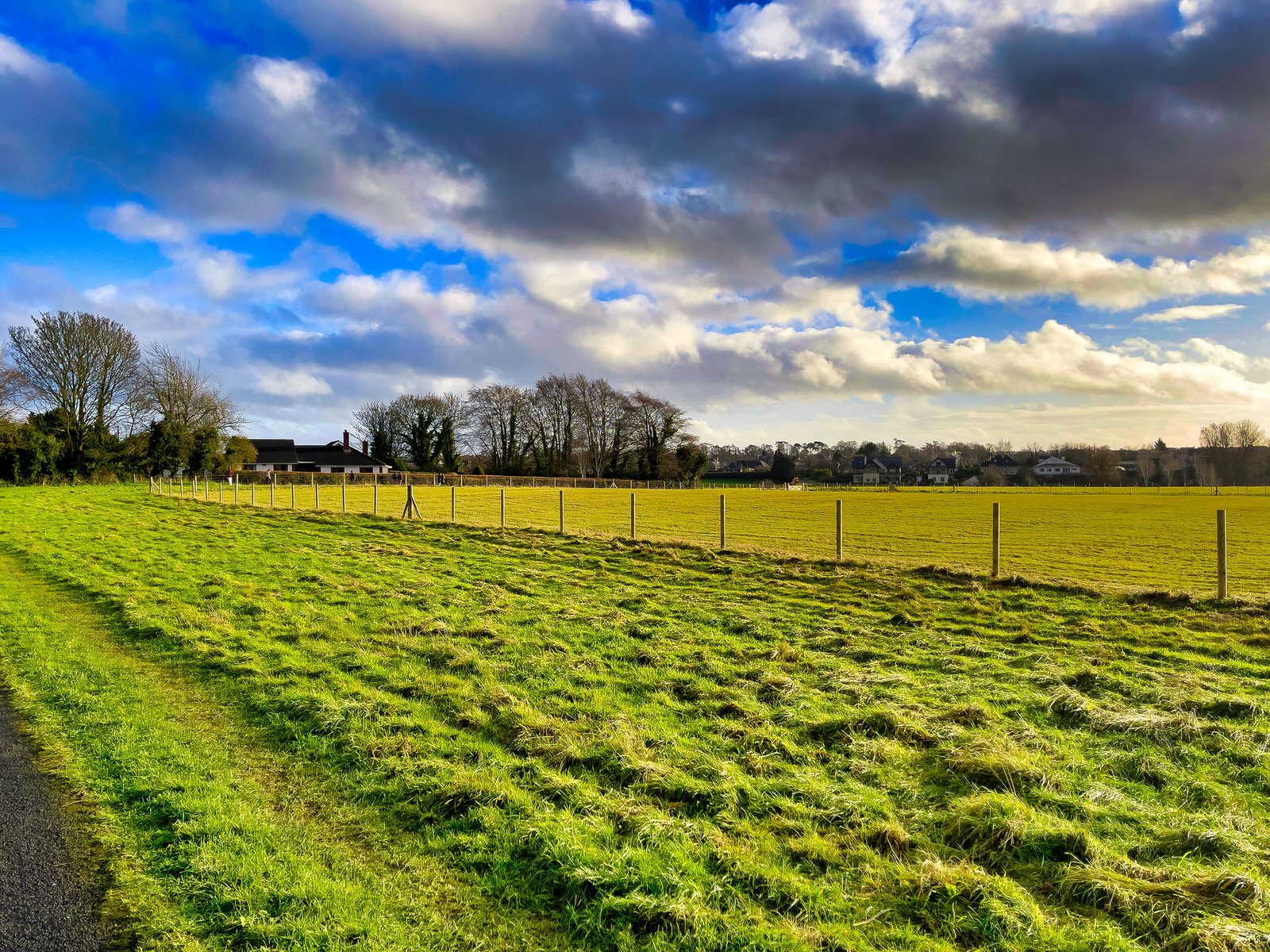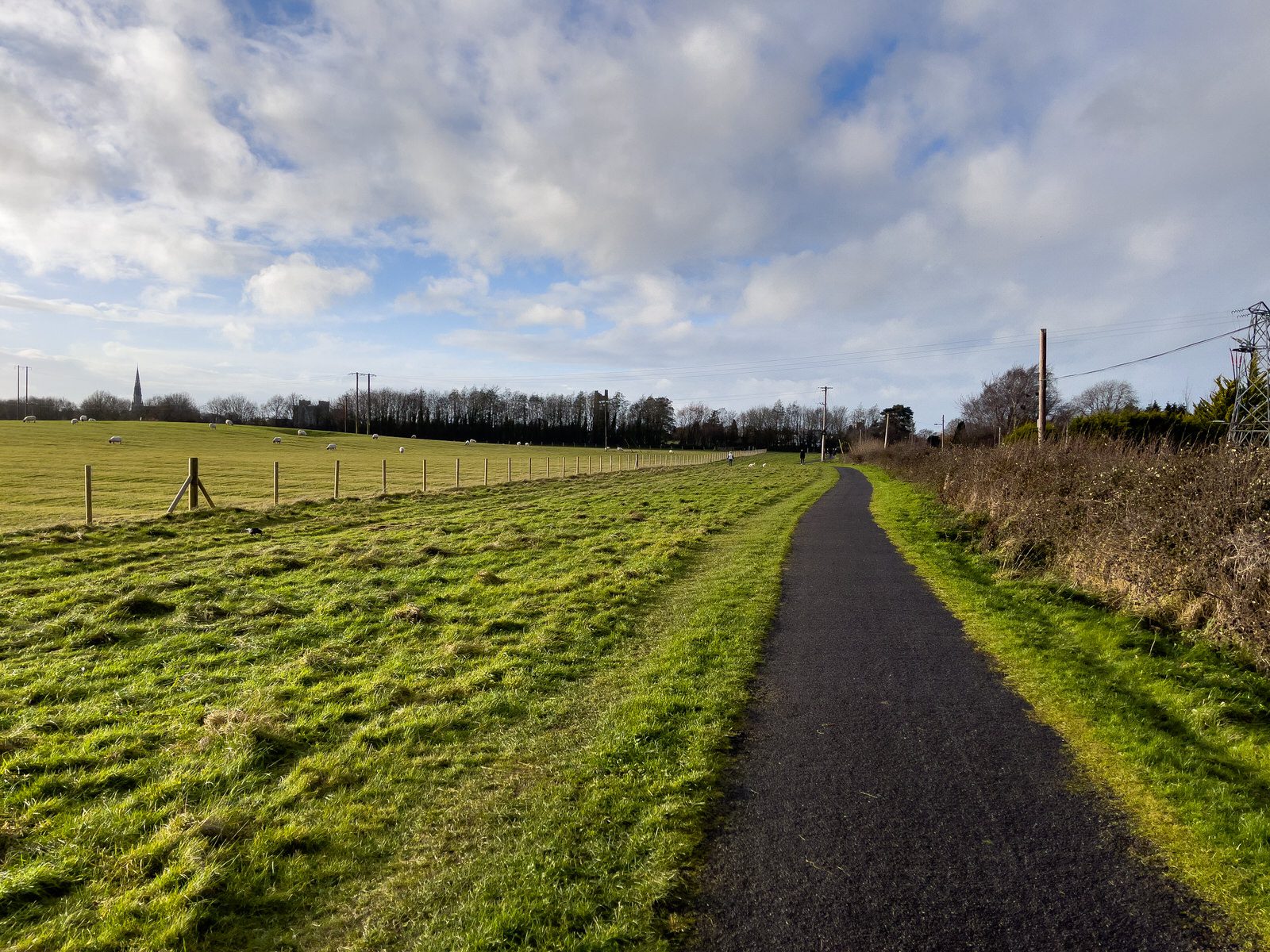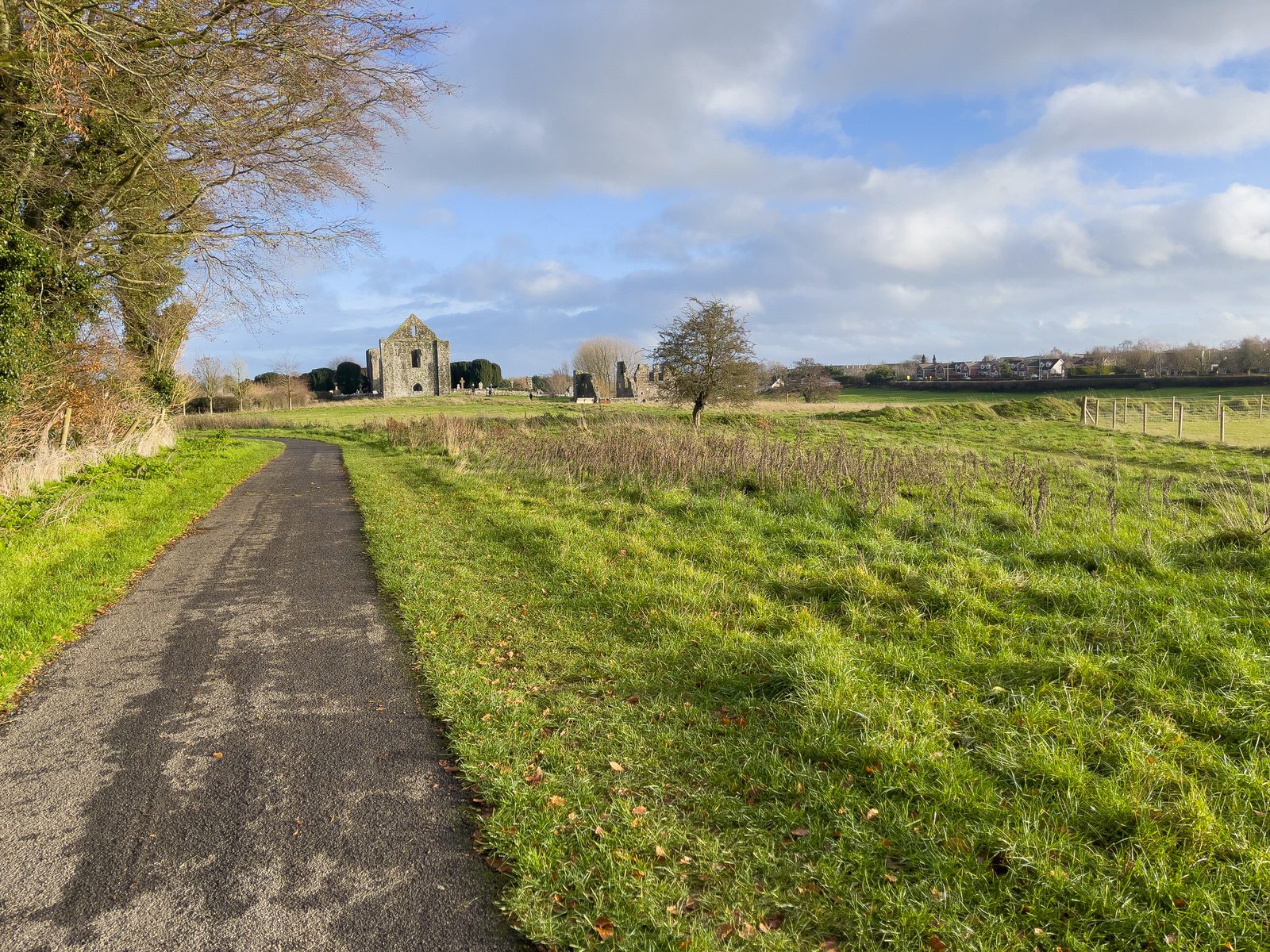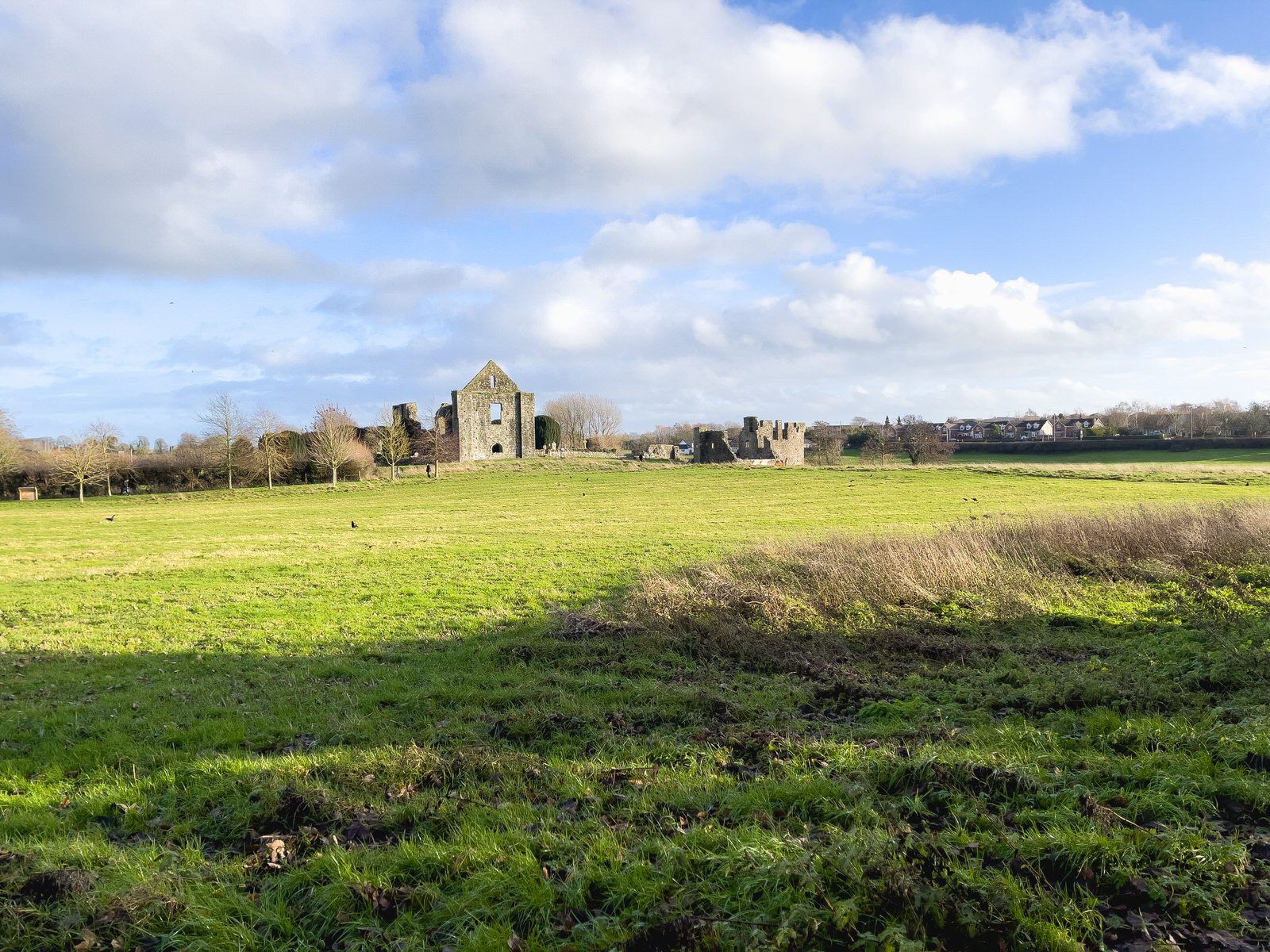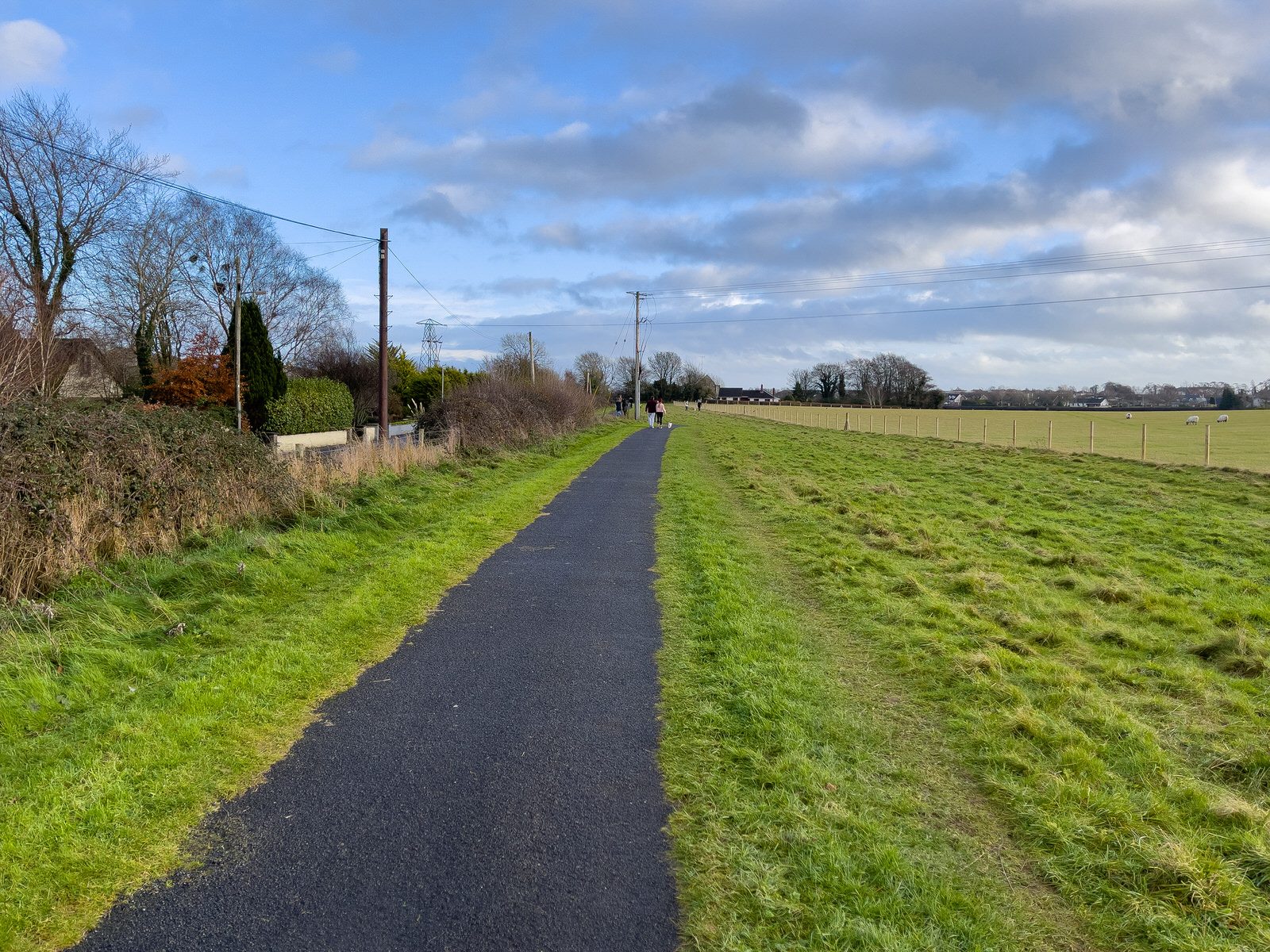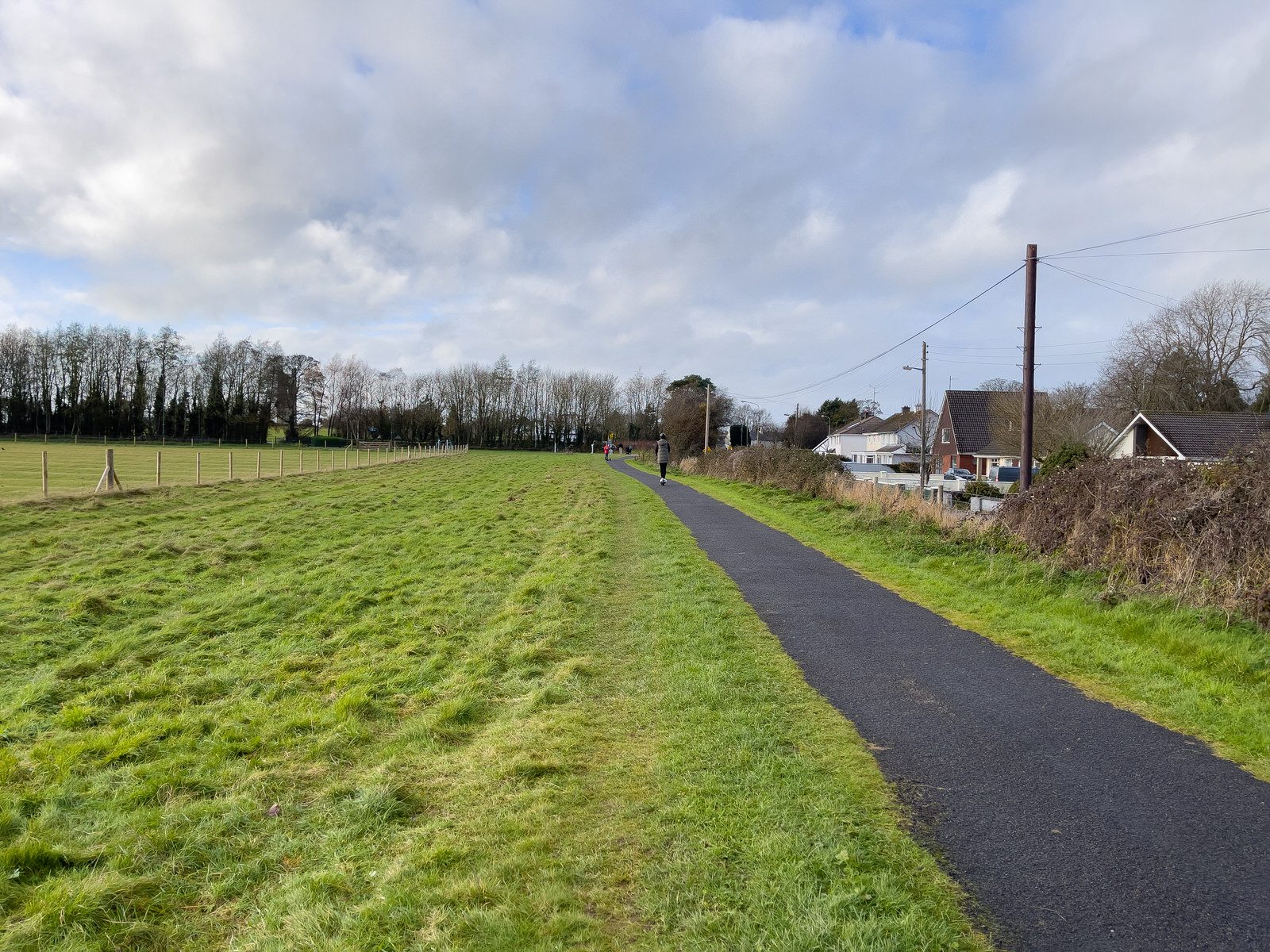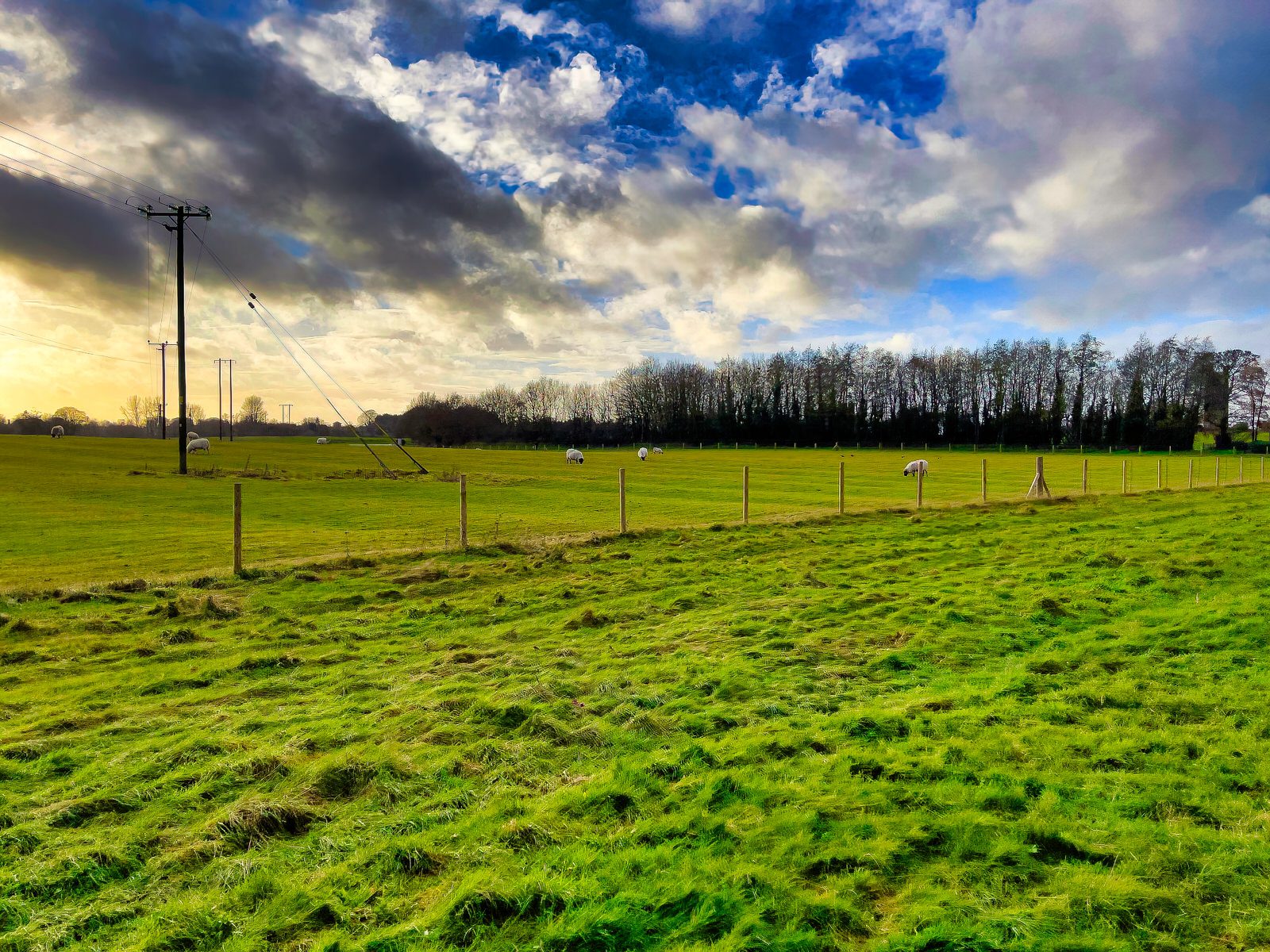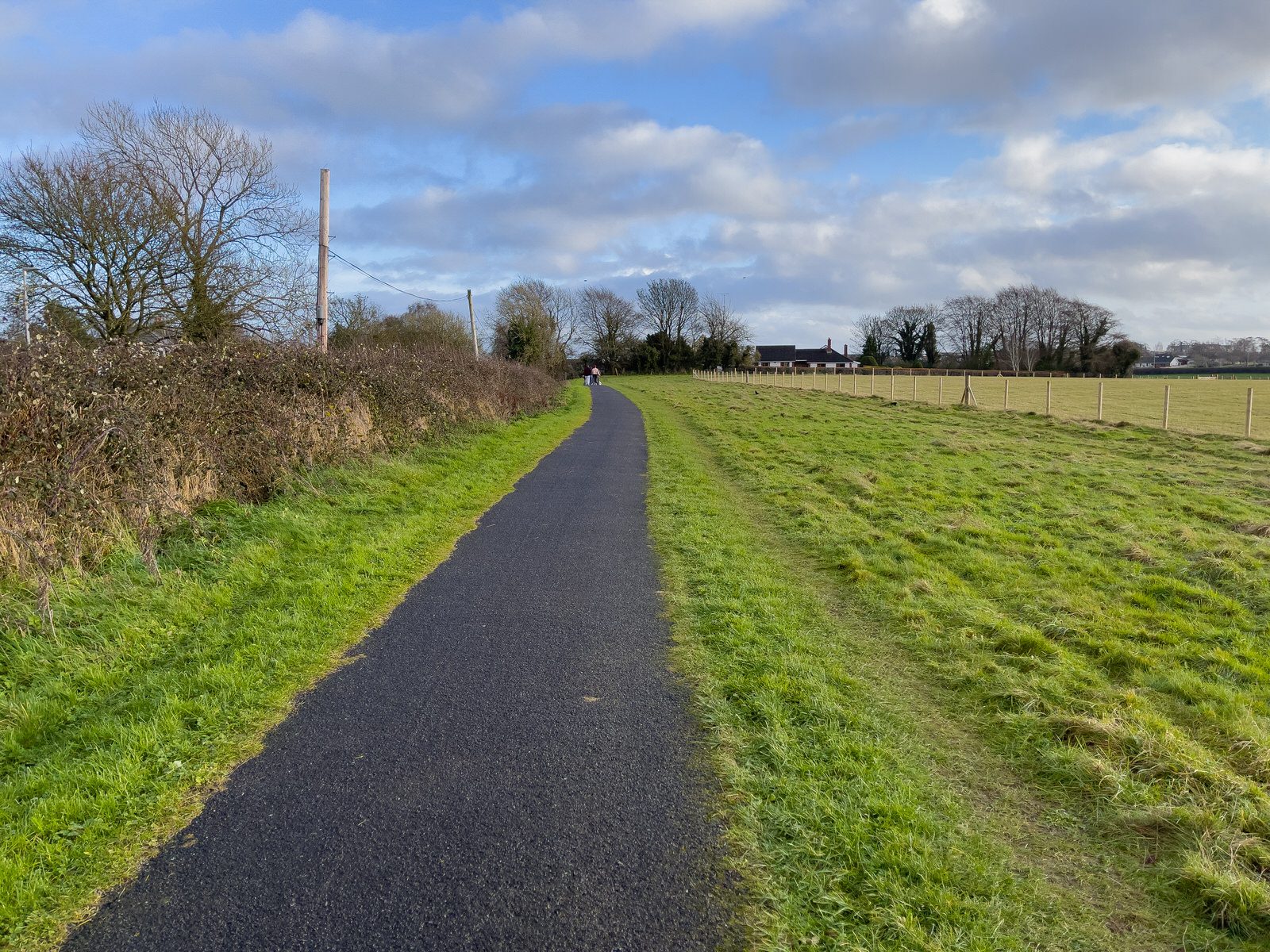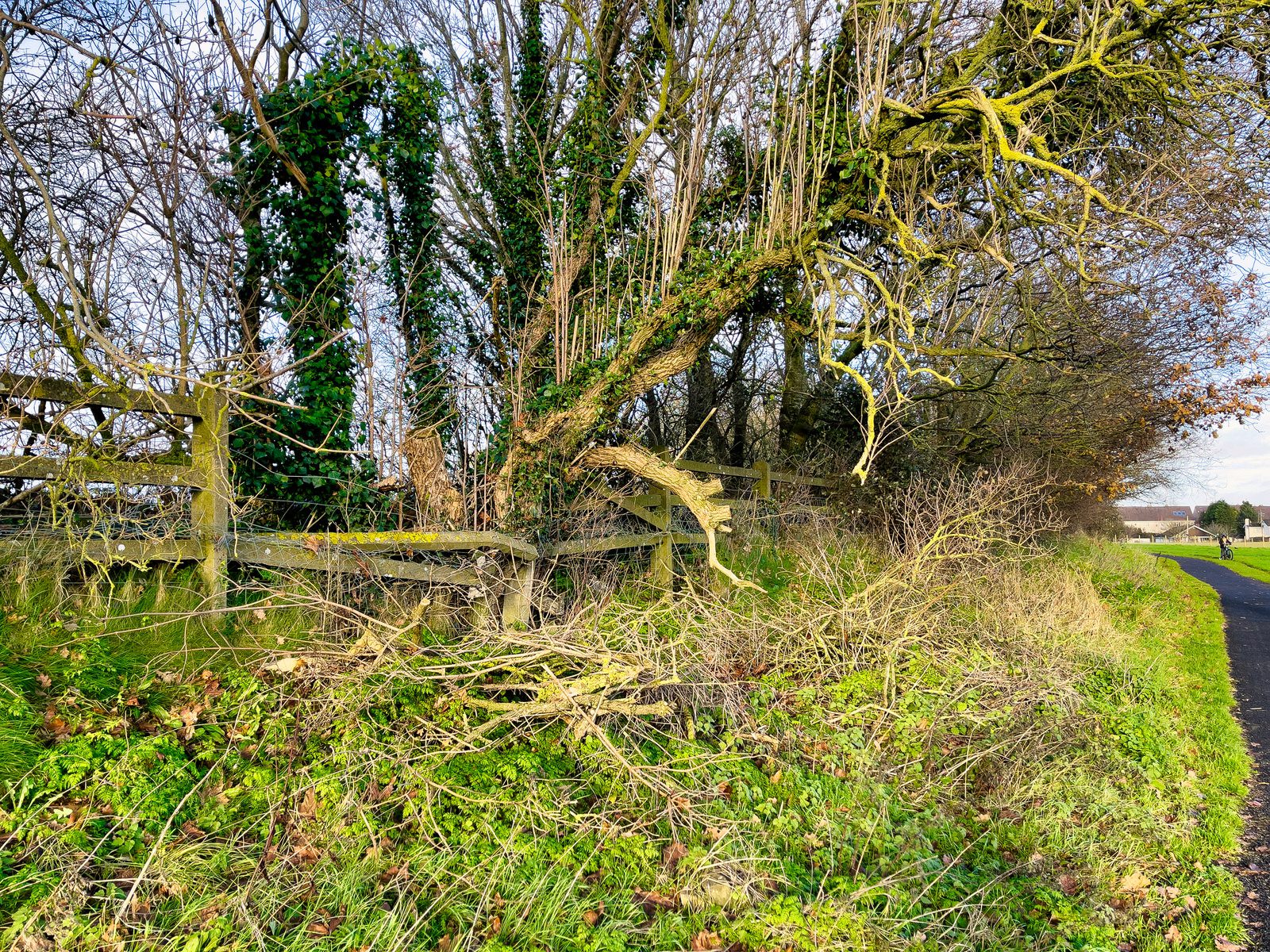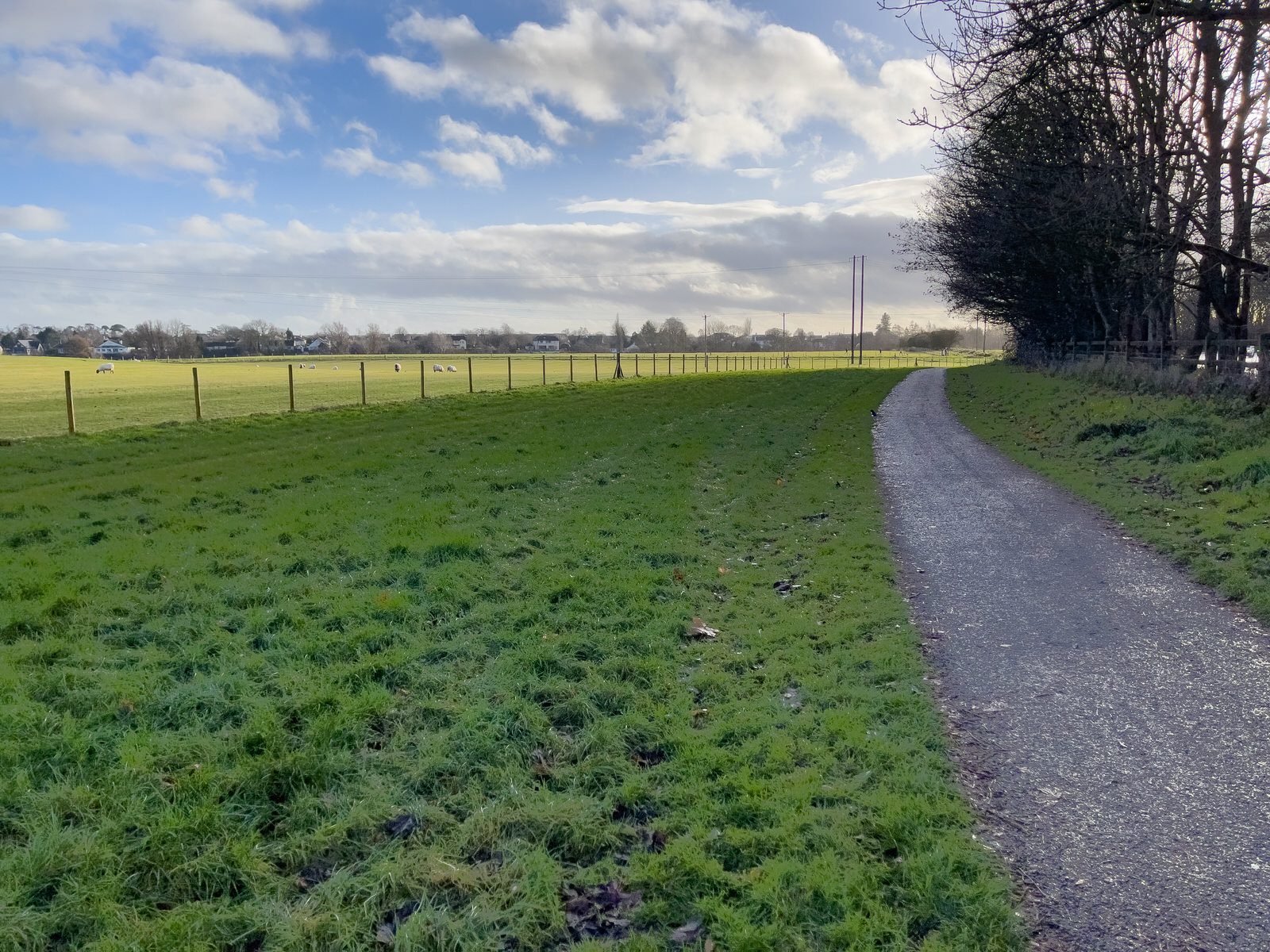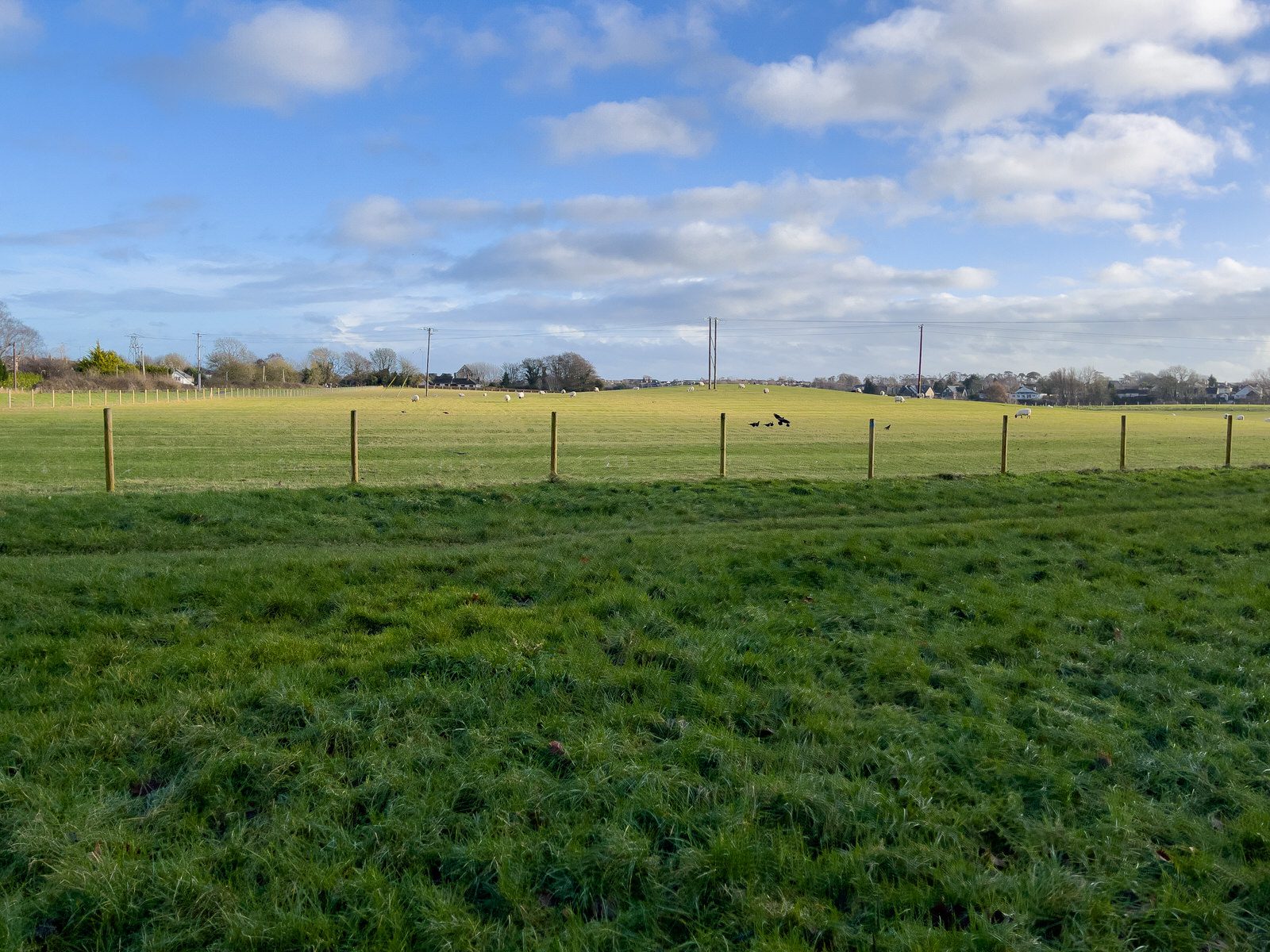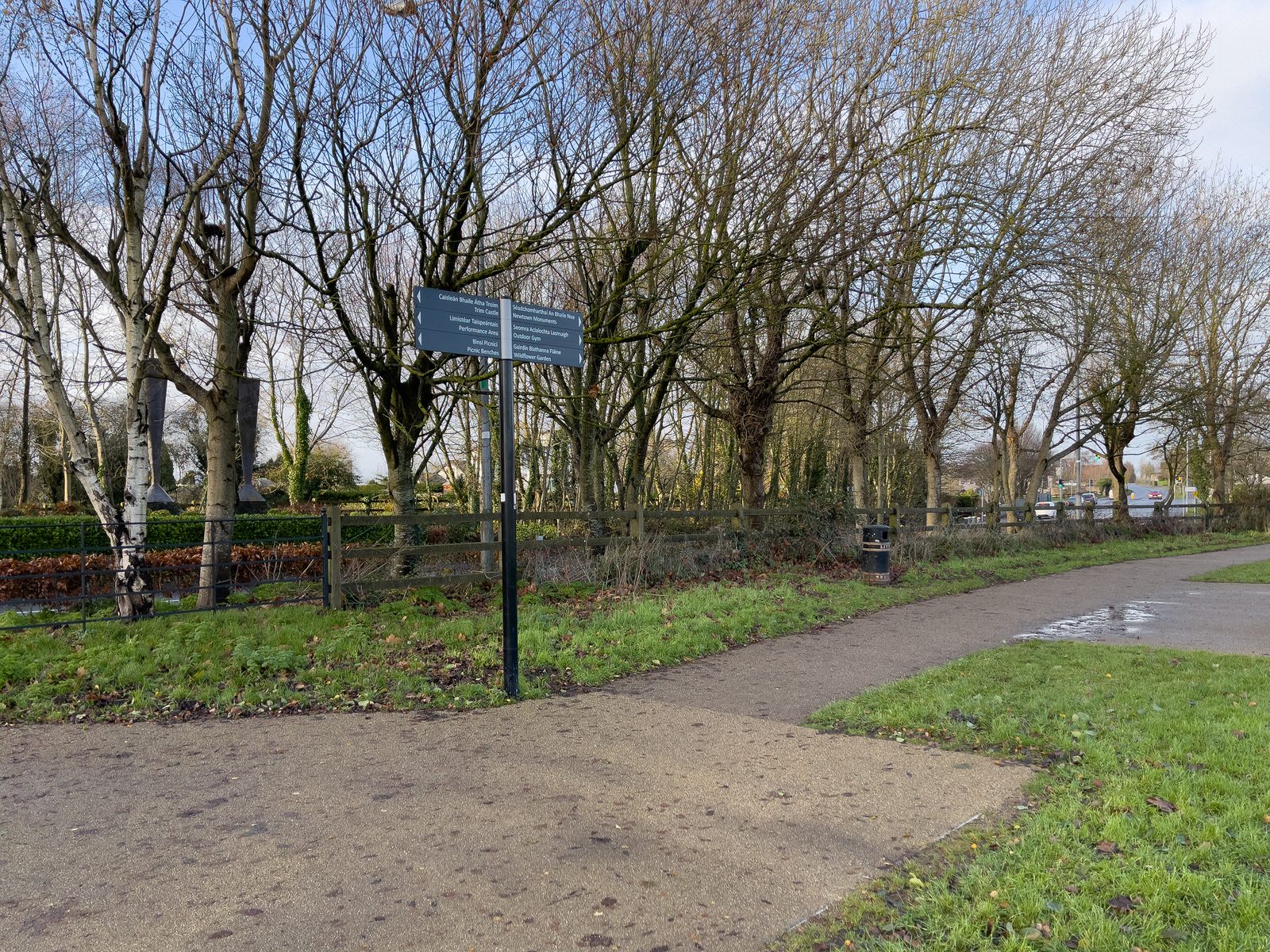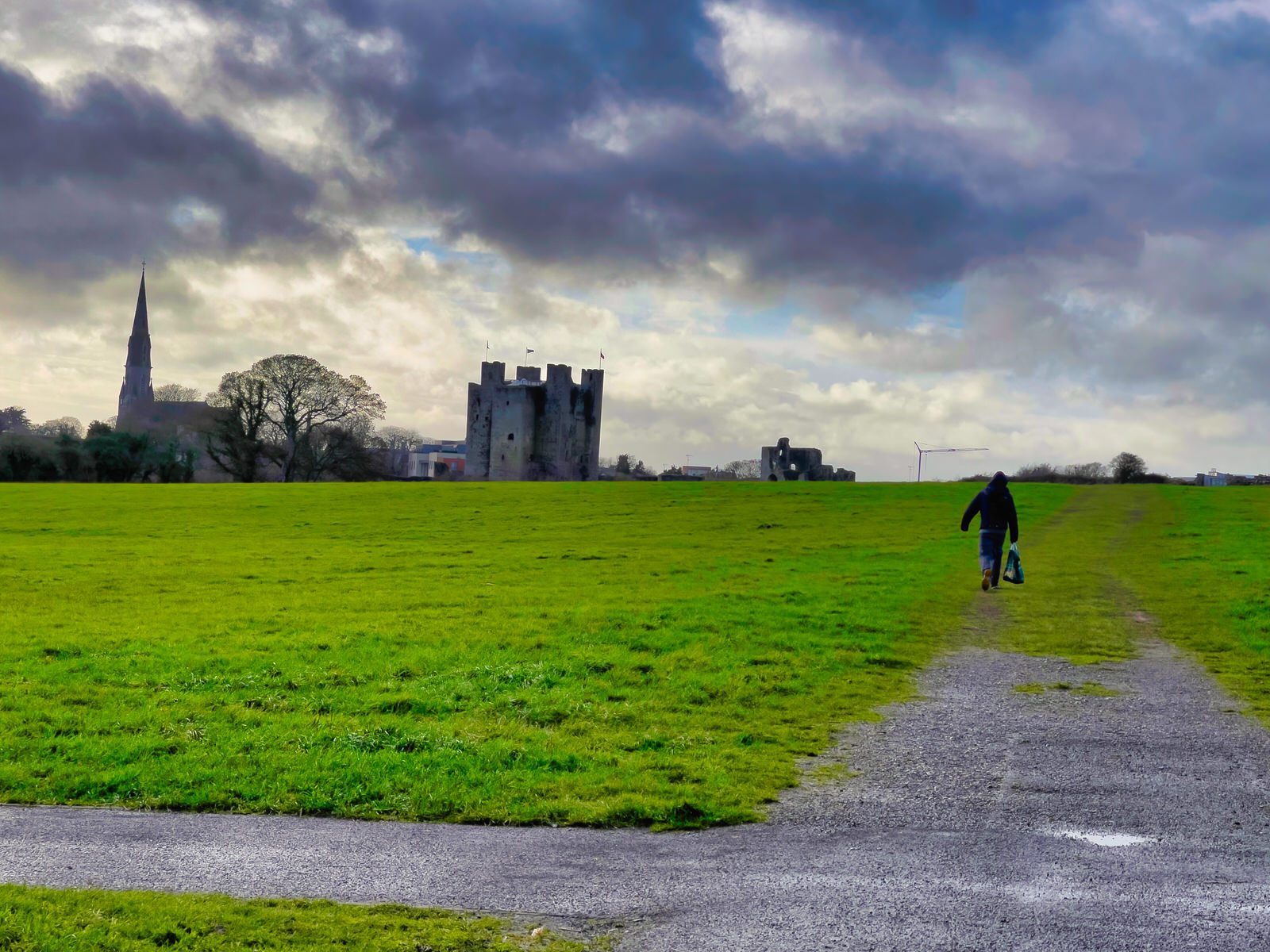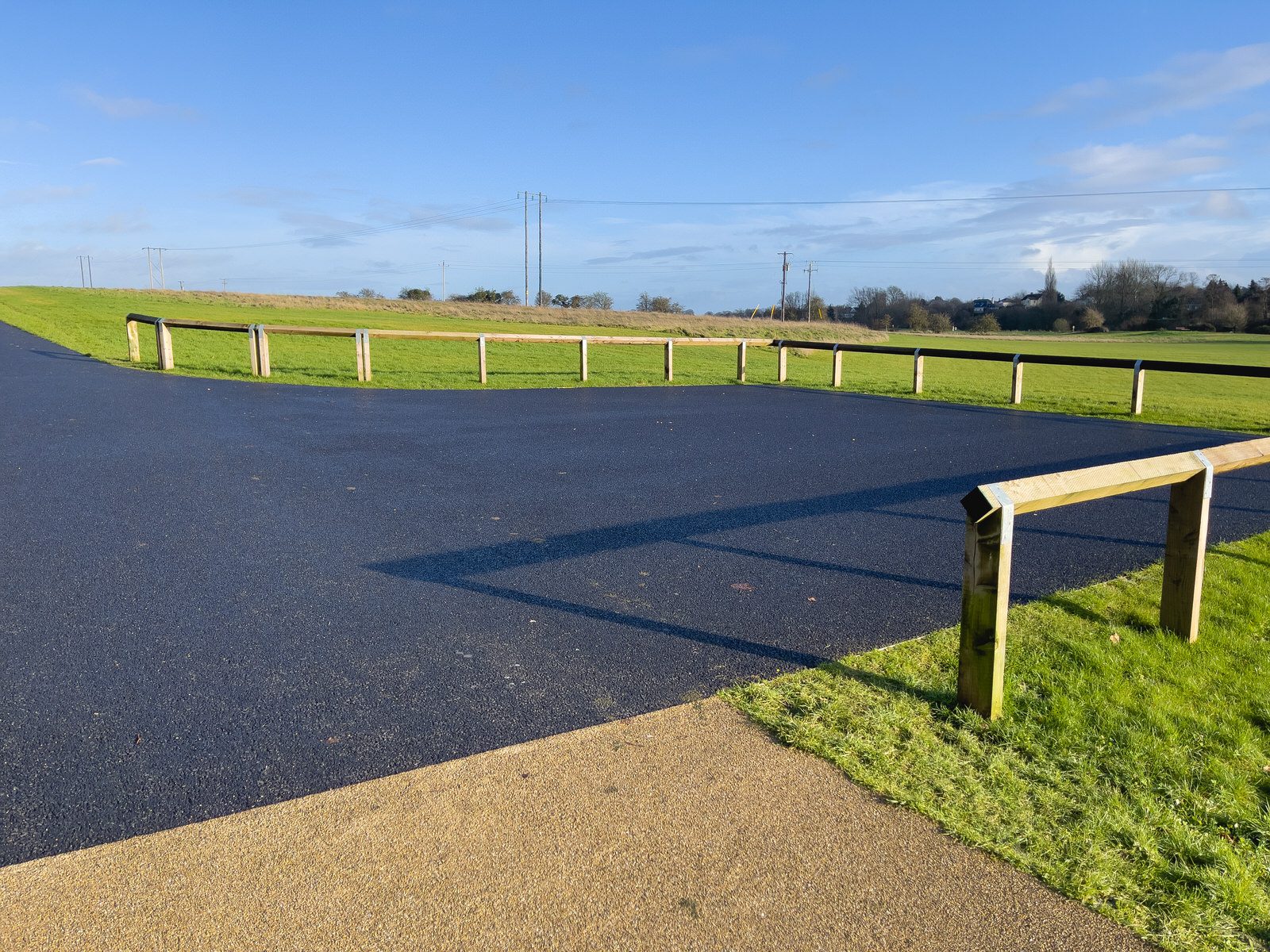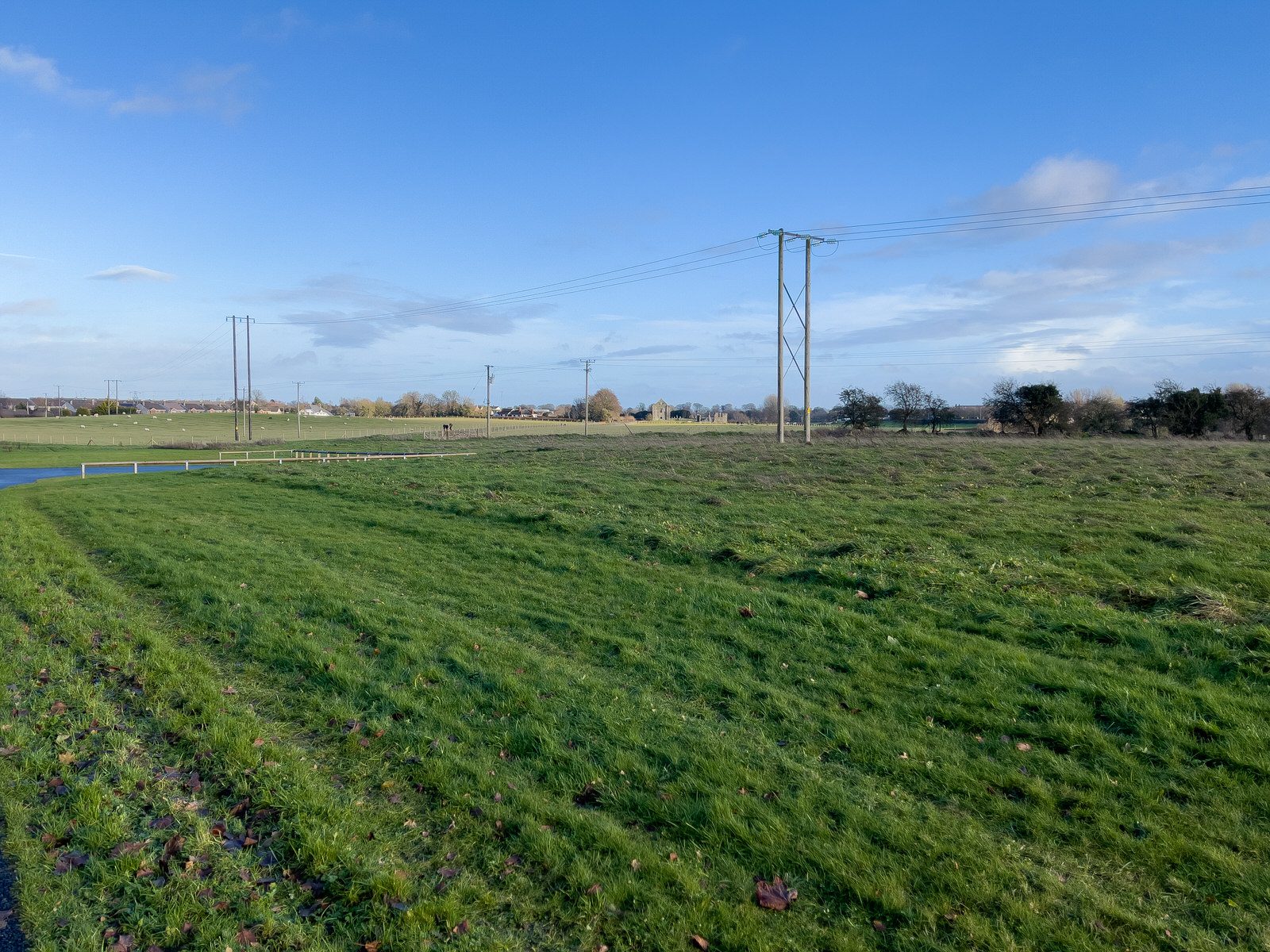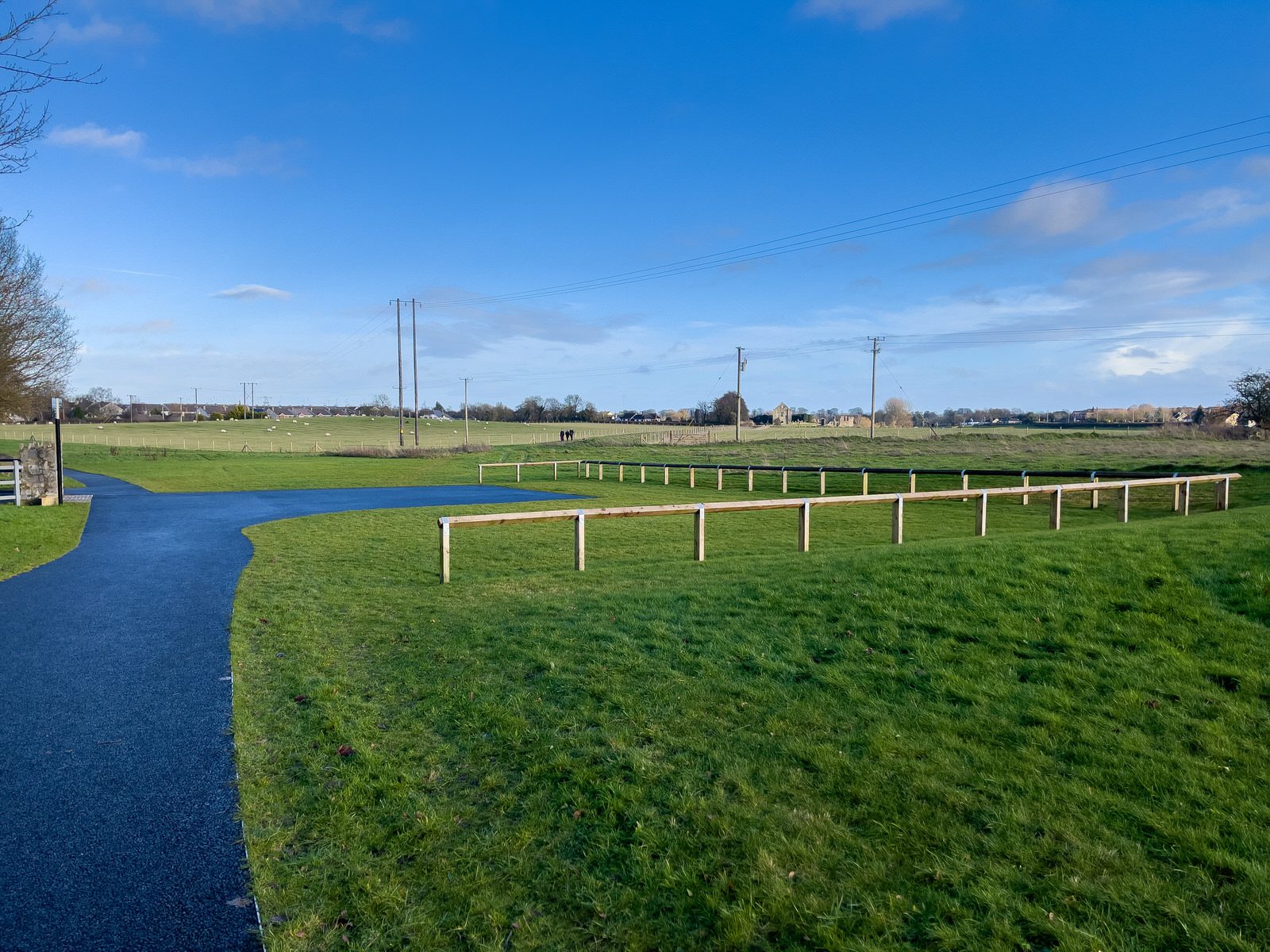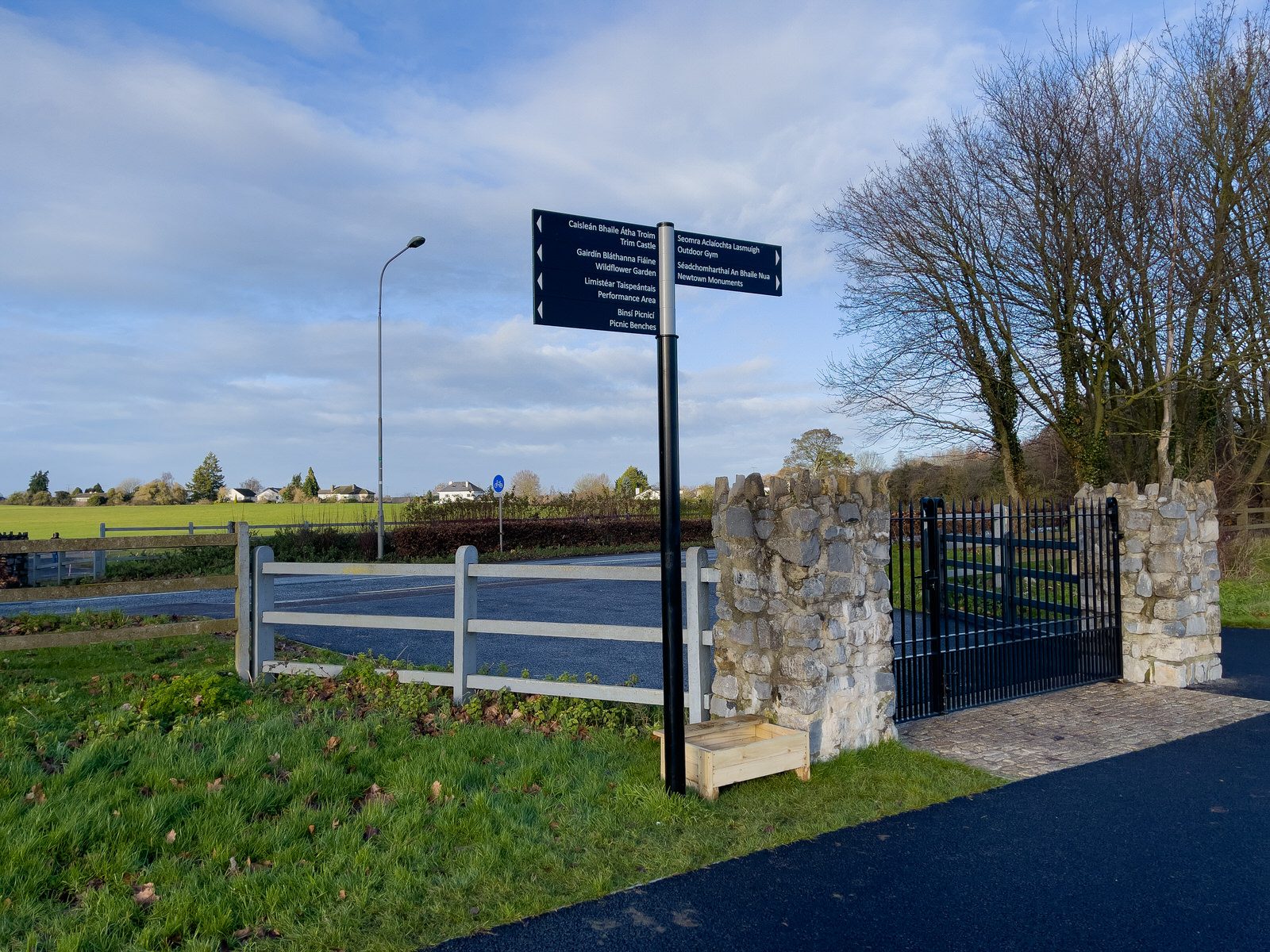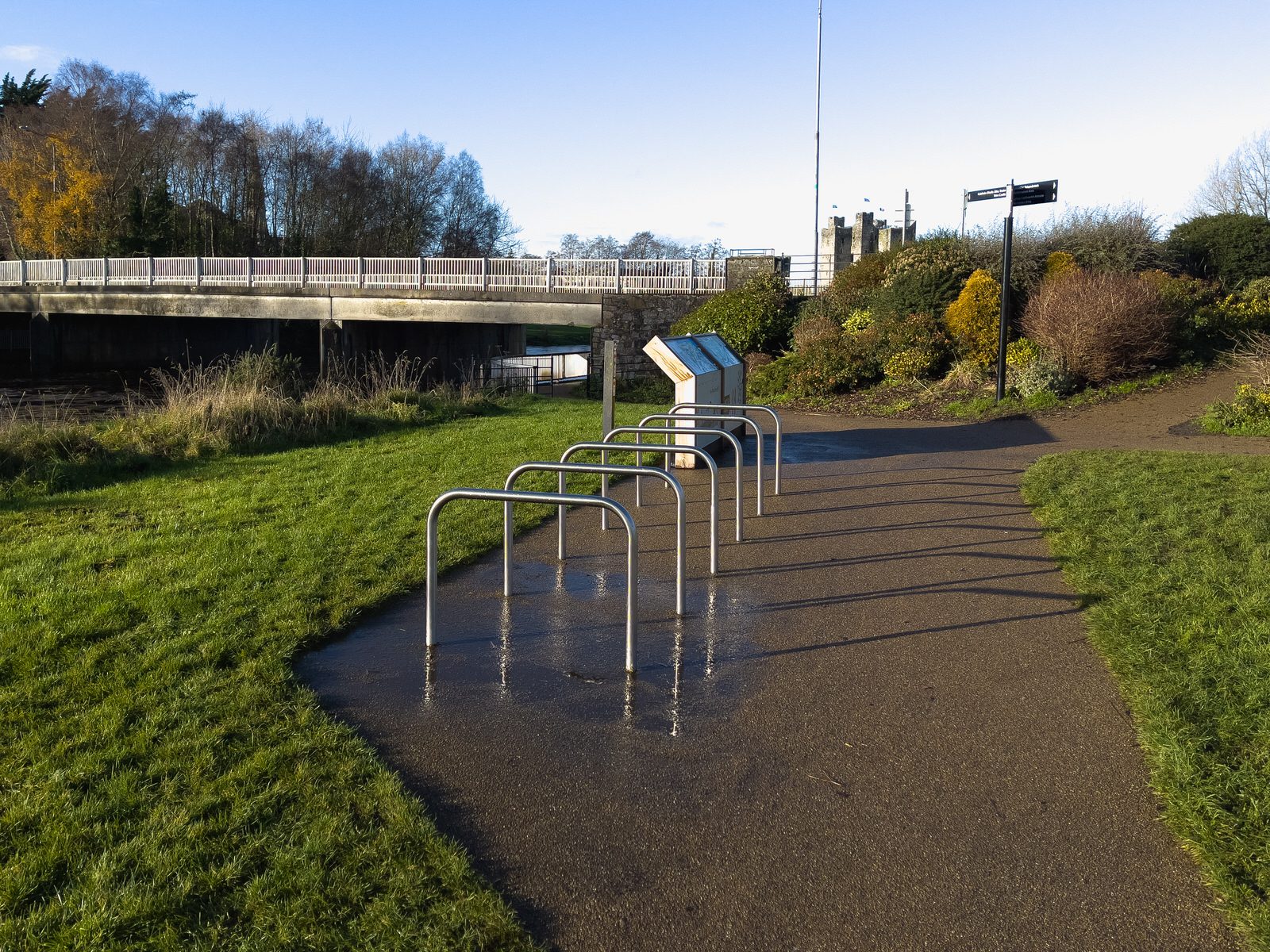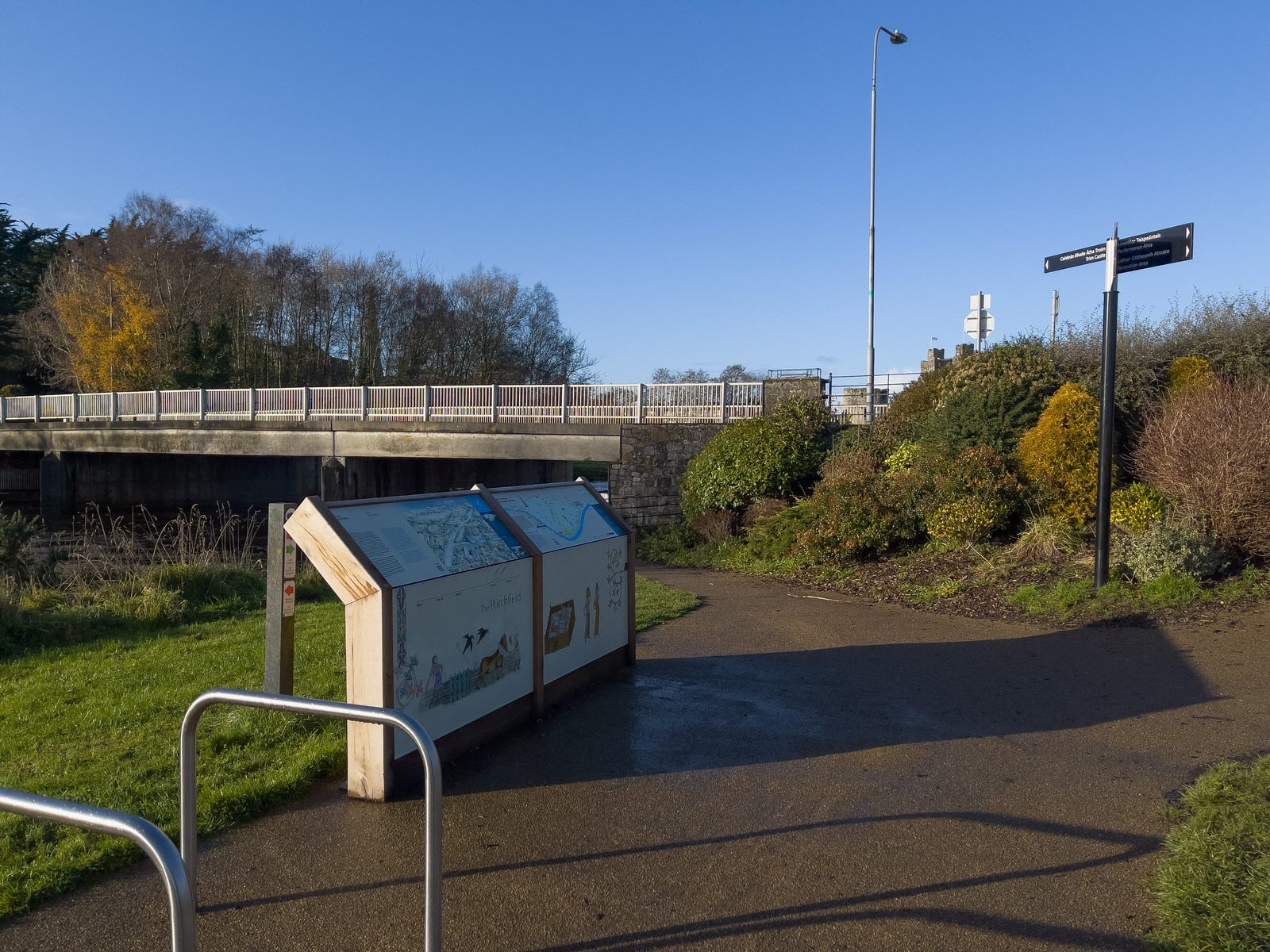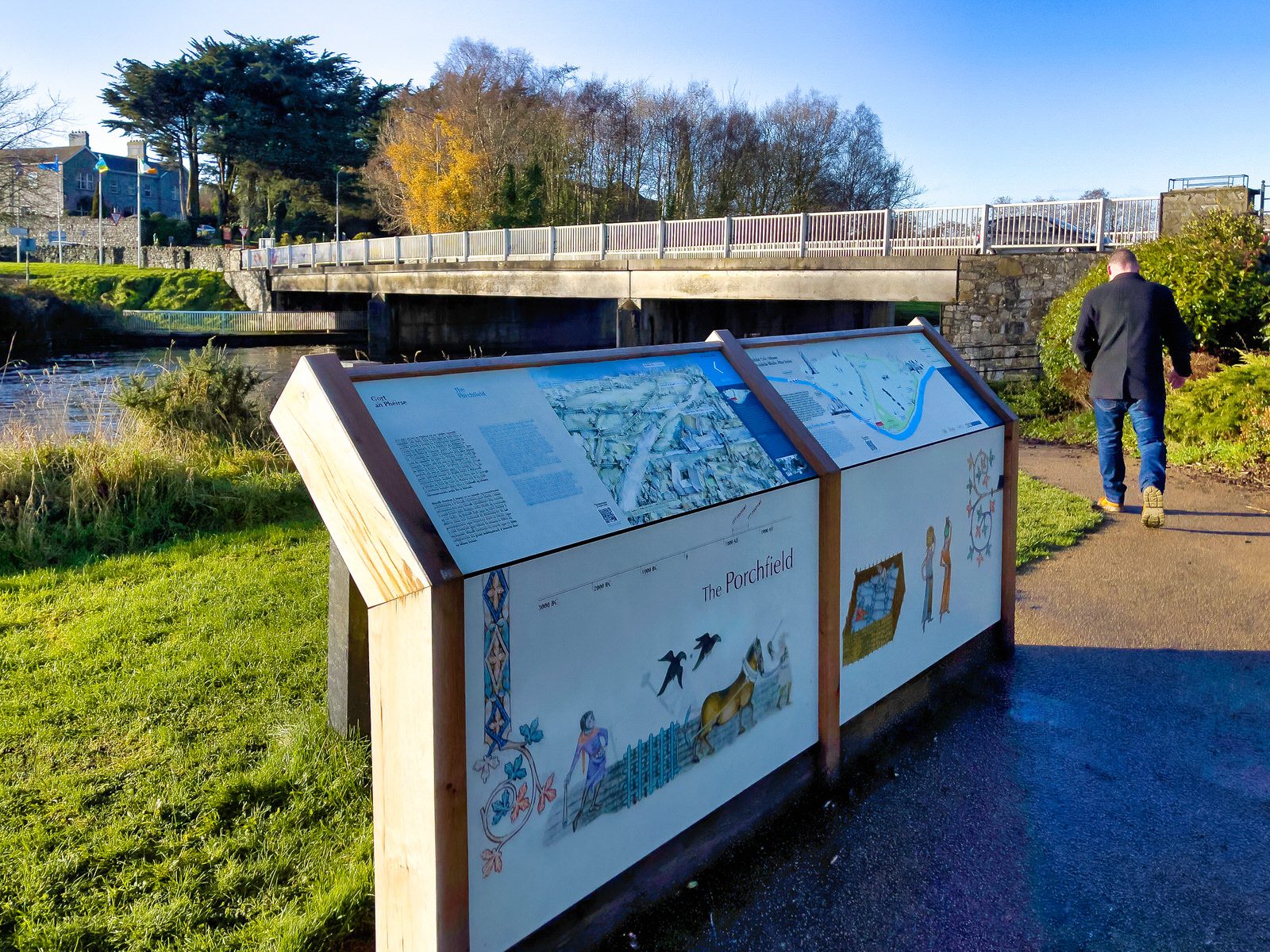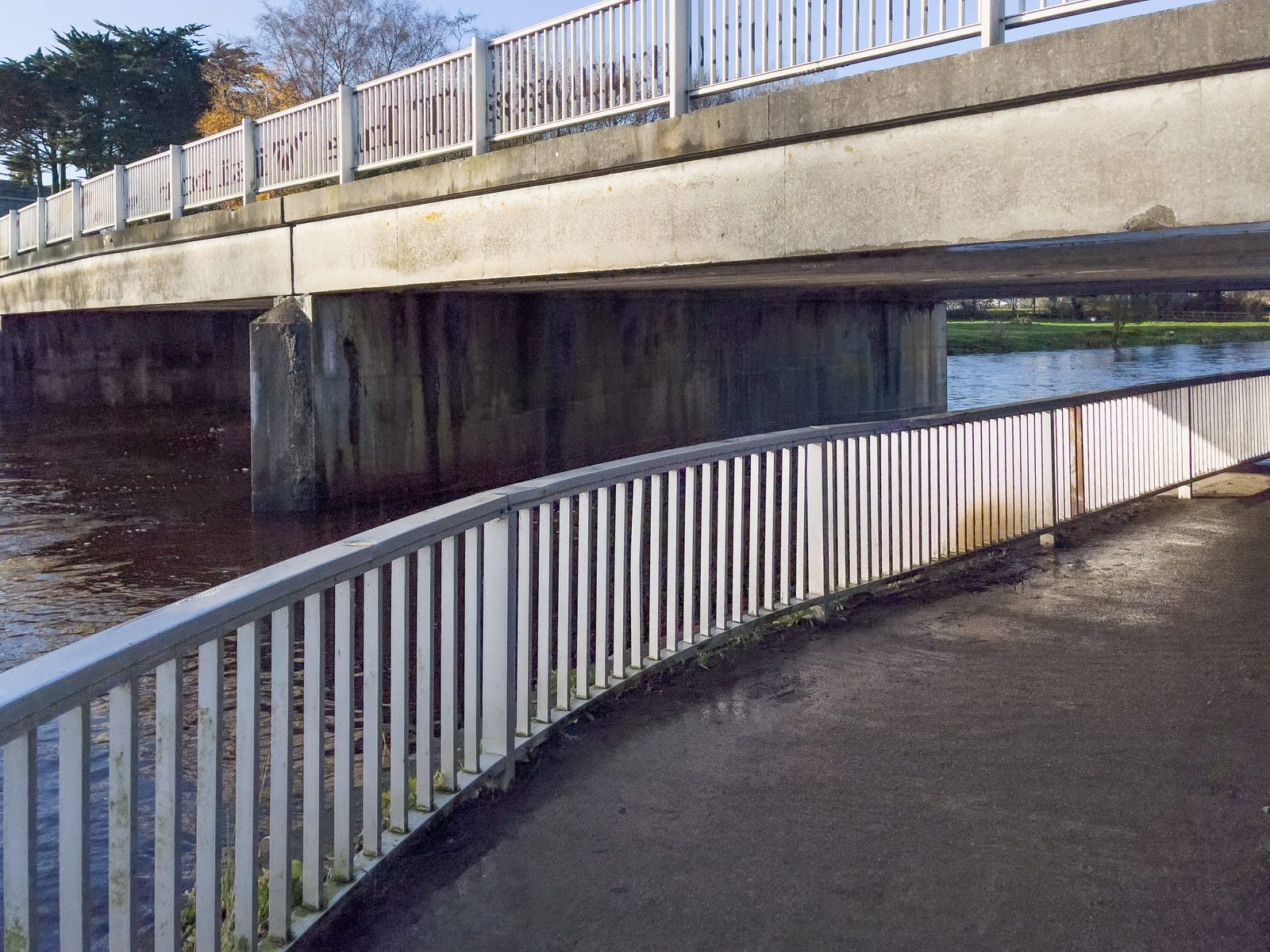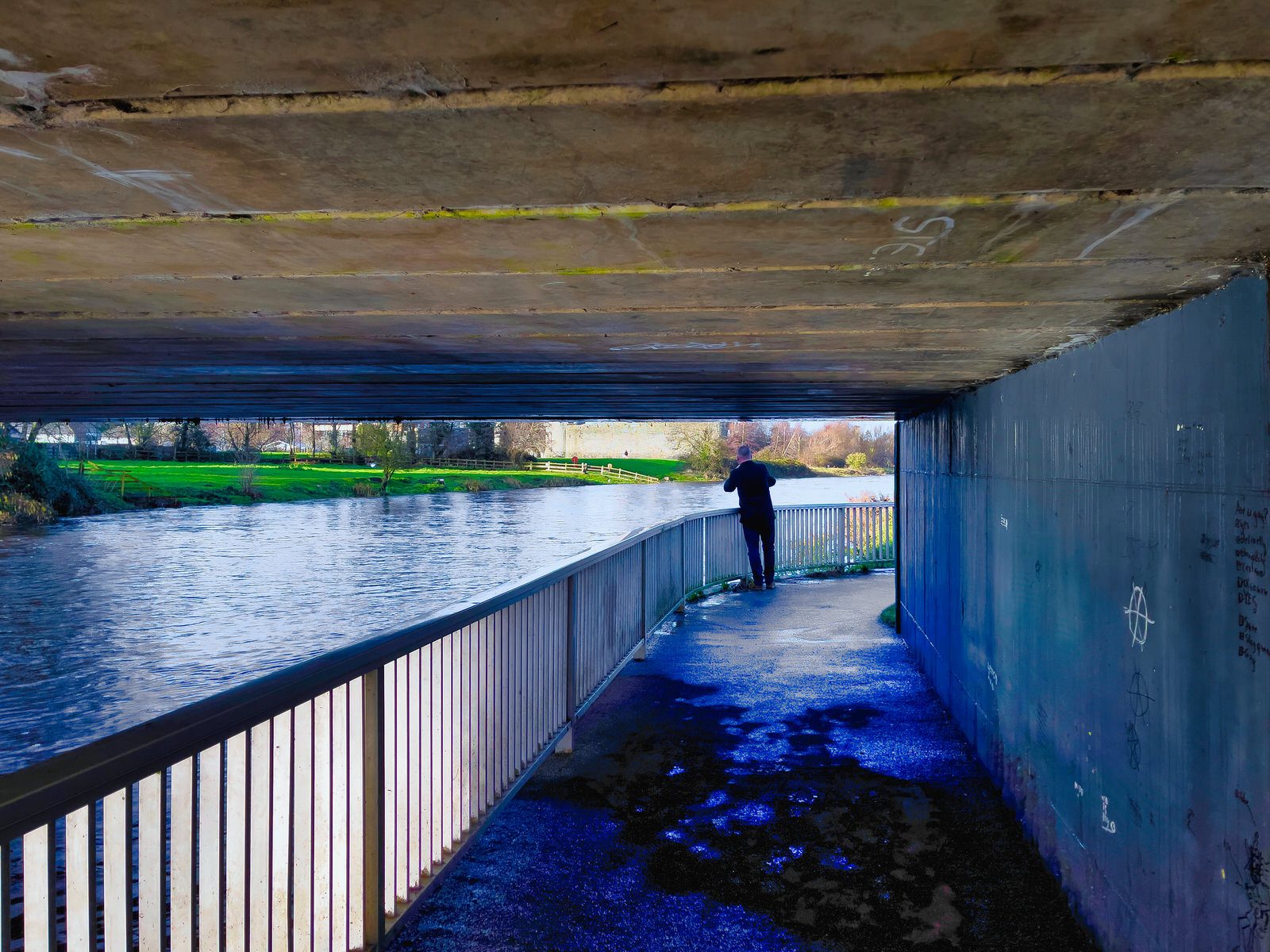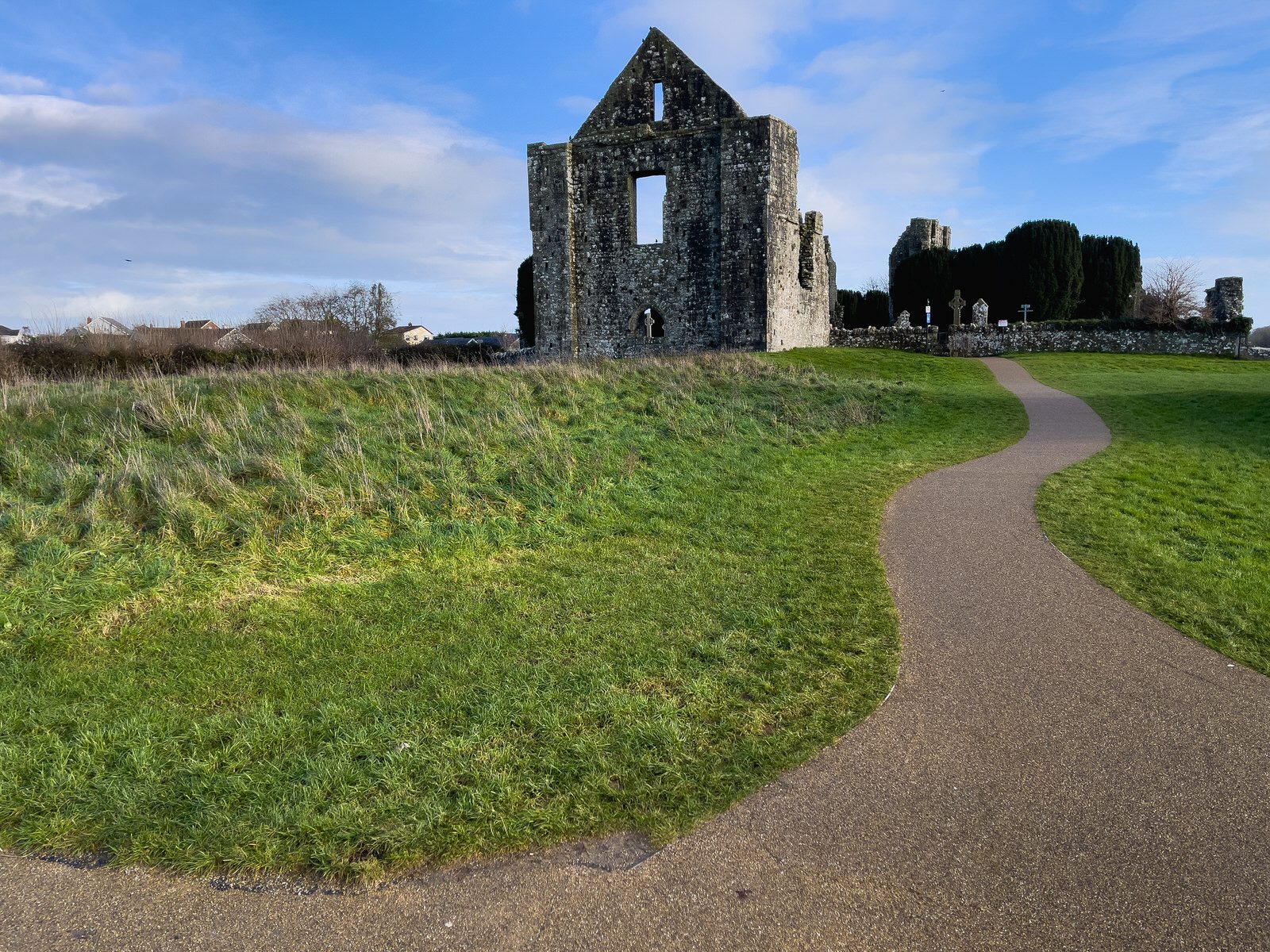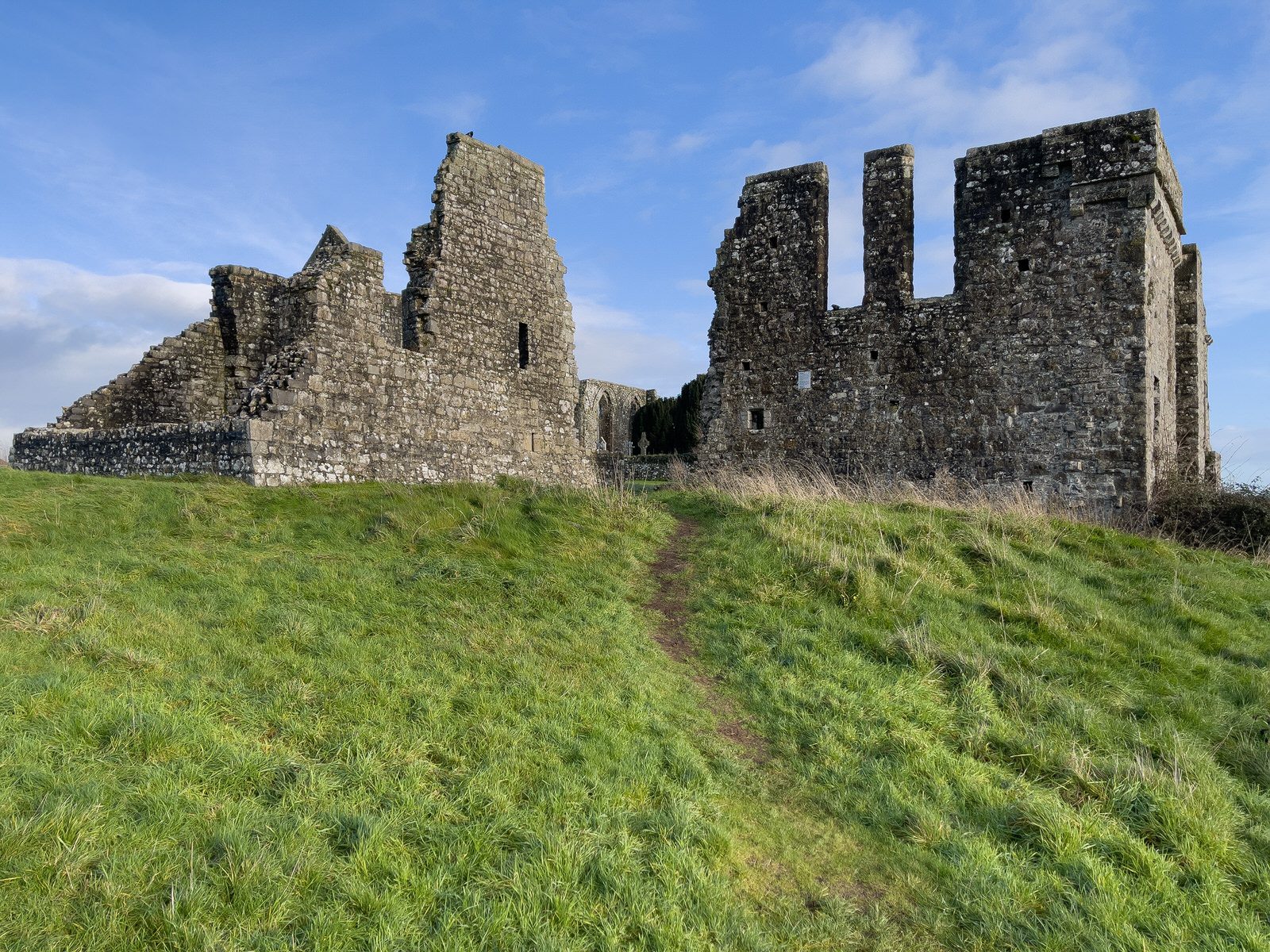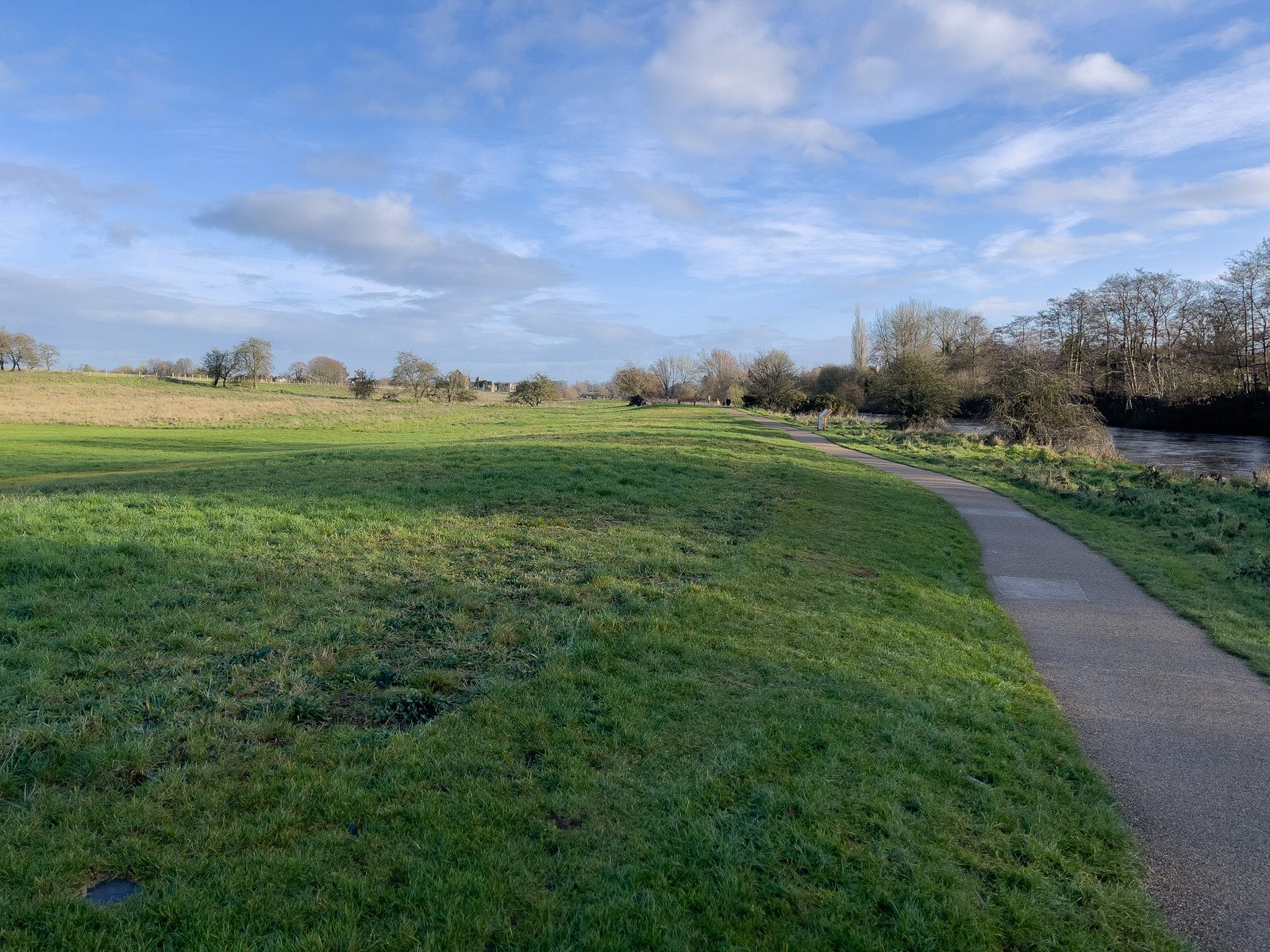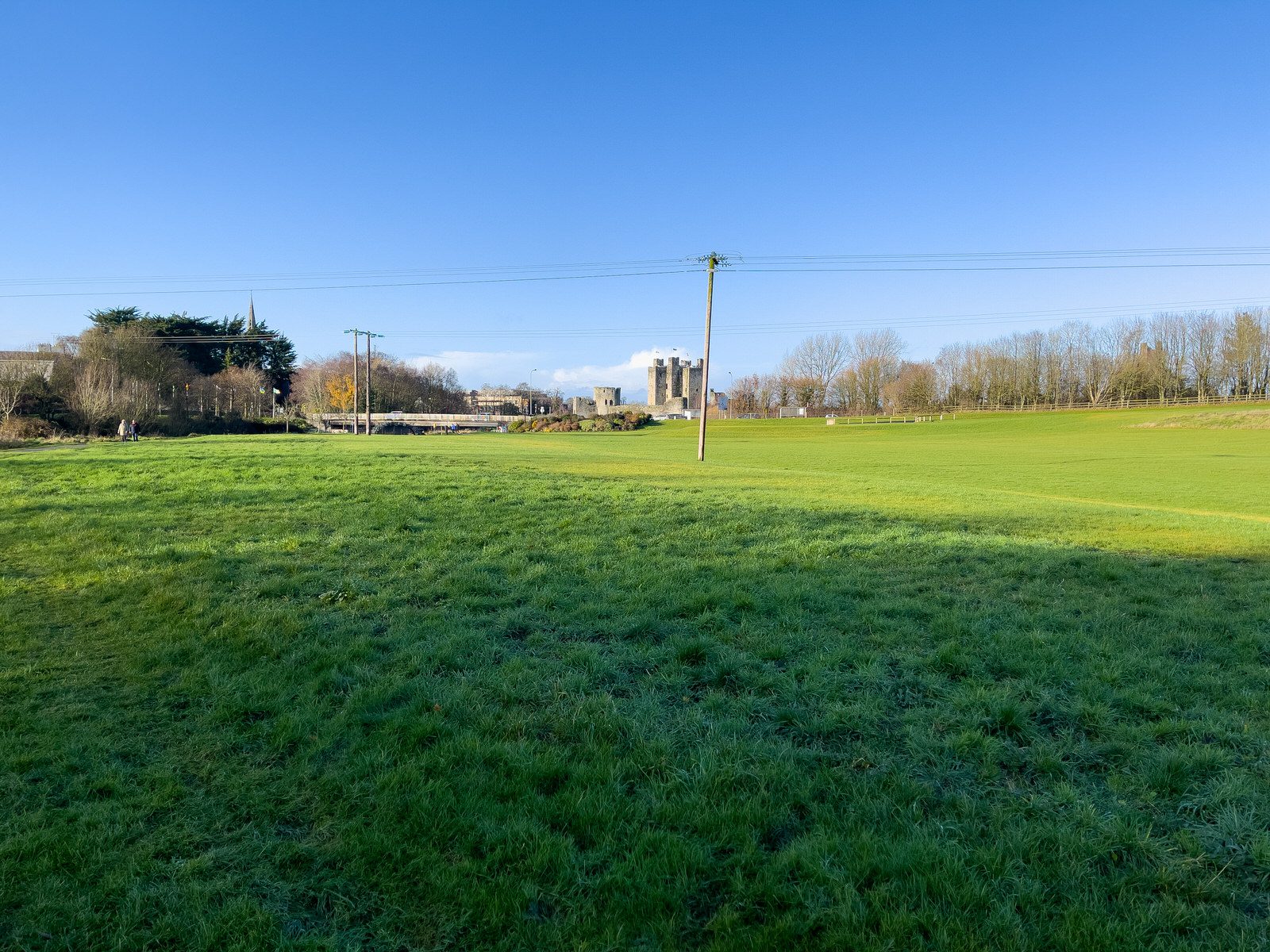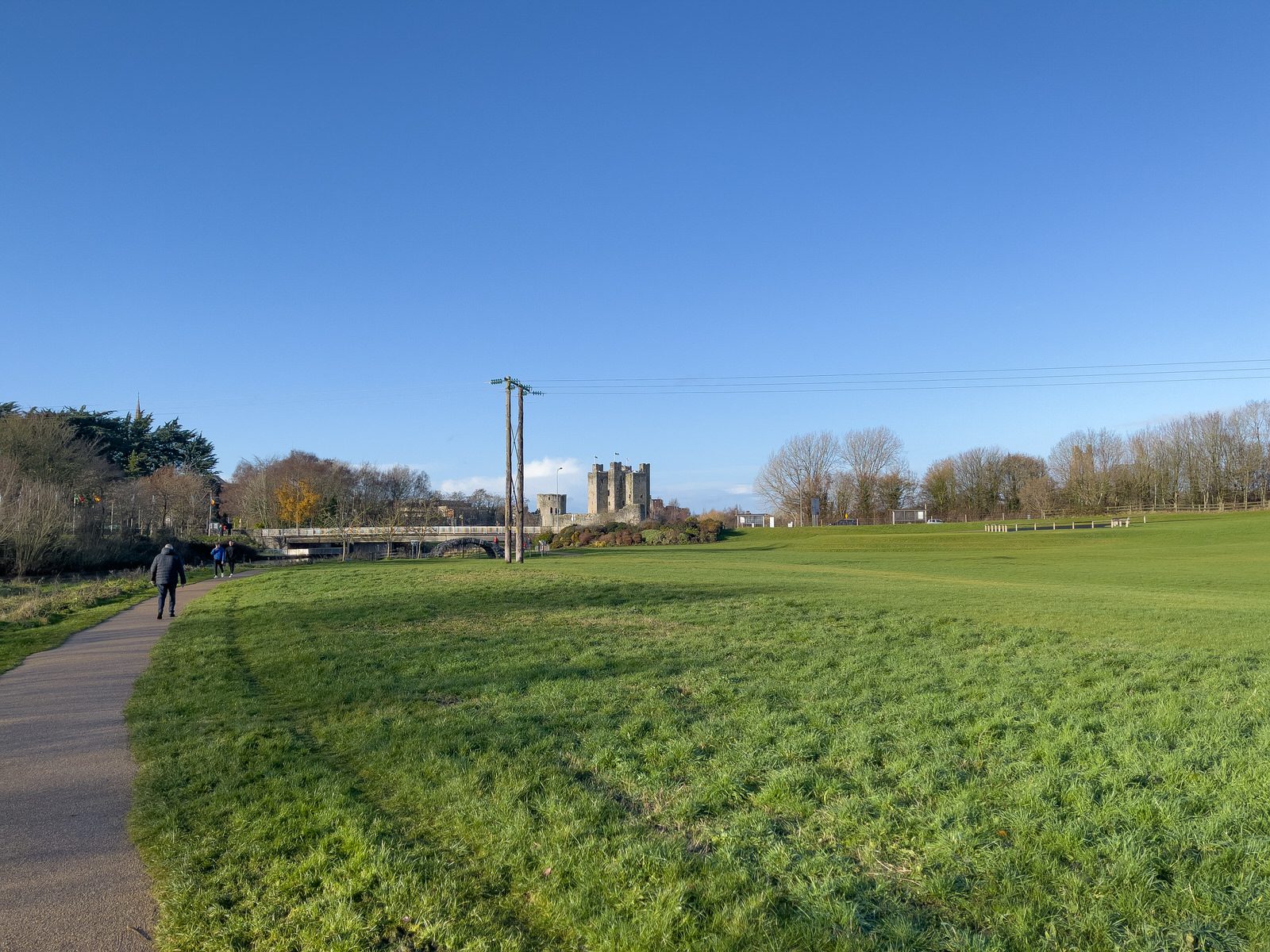BRIDGE STREET TRIM COUNTY MEATH CHRISTMAS 2016
The Bounty Bar is on Bridge Street close to some of Trim’s most popular landmarks, such as Cathedral Church of St Patrick (0.2 mi) and Priory of St. John The Baptist (0.5 mi).
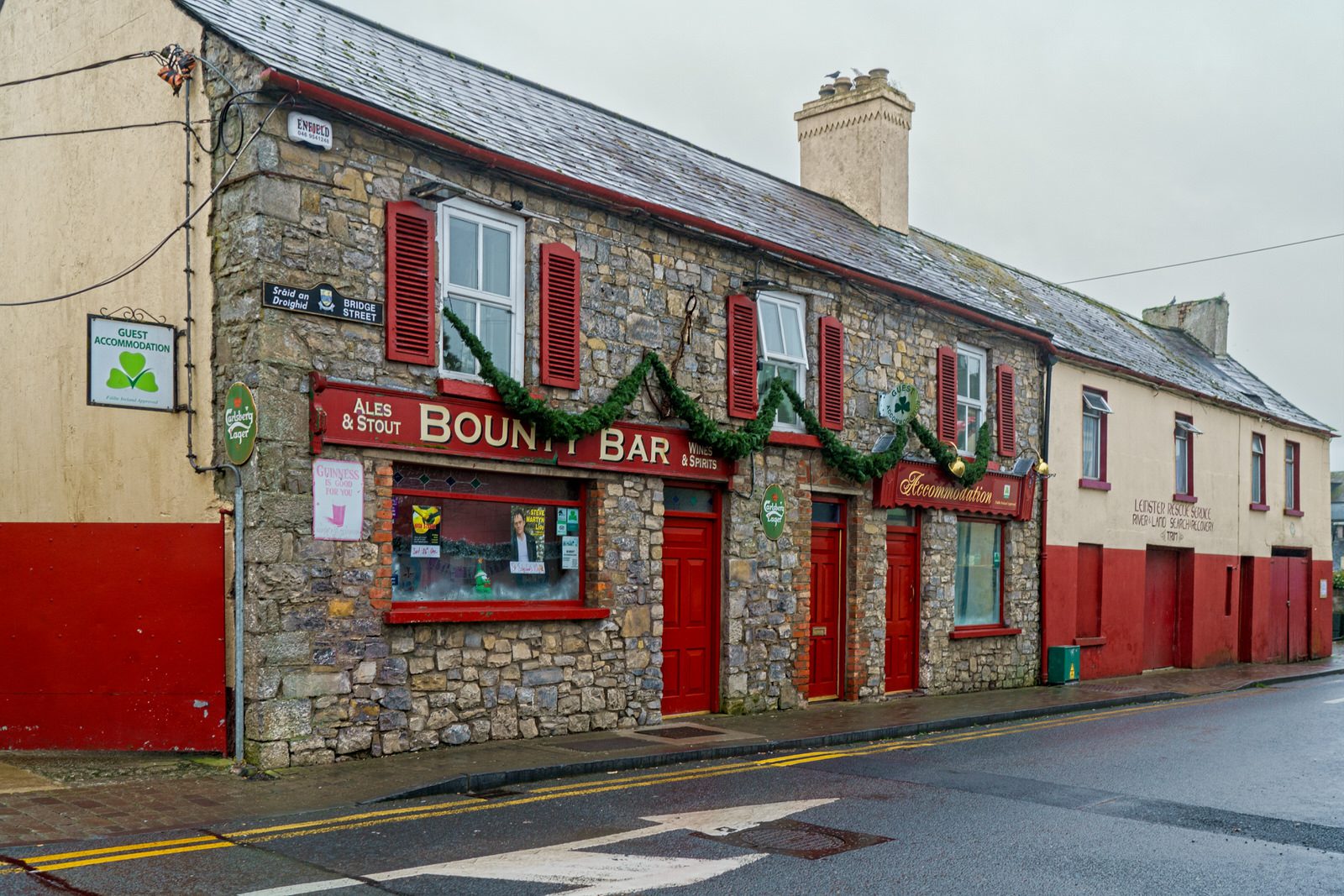
Photographed By William Murphy
by infomatique
BRIDGE STREET TRIM COUNTY MEATH CHRISTMAS 2016
The Bounty Bar is on Bridge Street close to some of Trim’s most popular landmarks, such as Cathedral Church of St Patrick (0.2 mi) and Priory of St. John The Baptist (0.5 mi).

by infomatique
THIS IS ALL THAT REMAINS OF ST MARYS ABBEY
All that remains of St. Mary’s Abbey is the 40m high east wall of the tower known as the Yellow Steeple. Its name comes from the yellow colour reflected by the stonework in the setting sun.
It is claimed that St. Patrick founded Ireland’s first great church at Trim. The church was destroyed a number of times by attacking forces and it has long been believed that St. Mary’s Abbey was founded on the site of the church ruins. In fact the church of the new abbey continued to serve as the parish church. St. Malachy introduced Augustinian rule to the Abbey between 1140 and 1148.
The church was destroyed again in 1368, however shortly after the fire, the abbey erected a statue of the Virgin Mary. The statue known as ‘Our Lady of Trymme’ became famous for its curative powers and healing miracles. Trim became a major pilgrimage destination for Irish Rebels and English soldiers alike. Indeed, such was the statue’s fame in the fifteenth century that some have referred to Trim as “the Lourdes of Ireland” at that time. Unfortunately the statue met its end during the Reformation with the dissolution of the monasteries under Henry VIII. The statue was destroyed in public. Although local legend suggests that the statue survived a lot longer than Henry VIII would have liked.
The abbey itself was destroyed by Oliver Cromwell. It is believed that the Yellow Steeple was actually used as a garrison against Cromwell’s troops until the tower was destroyed. The Yellow Steeple is generally considered the only remains of the Abbey but there is some evidence that indicates the nearby manor house, Talbot’s Castle, may have been the abbey’s refectory before being converted into a private residence.
![THIS IS ALL THAT REMAINS OF ST MARYS ABBEY IN TRIM COUNTY MEATH [THE YELLOW STEEPLE]-215063-1 THE YELLOW STEEPLE 001](https://excellentstreetimages.com/TheTownOfTrimWordPress/wp-content/uploads/2023/03/THIS-IS-ALL-THAT-REMAINS-OF-ST-MARYS-ABBEY-IN-TRIM-COUNTY-MEATH-THE-YELLOW-STEEPLE-215063-1-1422x1067.jpg)
![THIS IS ALL THAT REMAINS OF ST MARYS ABBEY IN TRIM COUNTY MEATH [THE YELLOW STEEPLE]-215070-1 THE YELLOW STEEPLE 030](https://excellentstreetimages.com/TheTownOfTrimWordPress/wp-content/uploads/2023/03/THIS-IS-ALL-THAT-REMAINS-OF-ST-MARYS-ABBEY-IN-TRIM-COUNTY-MEATH-THE-YELLOW-STEEPLE-215070-1-1422x1067.jpg)
![THIS IS ALL THAT REMAINS OF ST MARYS ABBEY IN TRIM COUNTY MEATH [THE YELLOW STEEPLE]-215071-1 THE YELLOW STEEPLE 029](https://excellentstreetimages.com/TheTownOfTrimWordPress/wp-content/uploads/2023/03/THIS-IS-ALL-THAT-REMAINS-OF-ST-MARYS-ABBEY-IN-TRIM-COUNTY-MEATH-THE-YELLOW-STEEPLE-215071-1-1422x1067.jpg)
![THIS IS ALL THAT REMAINS OF ST MARYS ABBEY IN TRIM COUNTY MEATH [THE YELLOW STEEPLE]-215064-1 THE YELLOW STEEPLE 028](https://excellentstreetimages.com/TheTownOfTrimWordPress/wp-content/uploads/2023/03/THIS-IS-ALL-THAT-REMAINS-OF-ST-MARYS-ABBEY-IN-TRIM-COUNTY-MEATH-THE-YELLOW-STEEPLE-215064-1-1067x800.jpg)
![THIS IS ALL THAT REMAINS OF ST MARYS ABBEY IN TRIM COUNTY MEATH [THE YELLOW STEEPLE]-215069-1 THE YELLOW STEEPLE 027](https://excellentstreetimages.com/TheTownOfTrimWordPress/wp-content/uploads/2023/03/THIS-IS-ALL-THAT-REMAINS-OF-ST-MARYS-ABBEY-IN-TRIM-COUNTY-MEATH-THE-YELLOW-STEEPLE-215069-1-1422x1067.jpg)
![THIS IS ALL THAT REMAINS OF ST MARYS ABBEY IN TRIM COUNTY MEATH [THE YELLOW STEEPLE]-215067-1 THE YELLOW STEEPLE 026](https://excellentstreetimages.com/TheTownOfTrimWordPress/wp-content/uploads/2023/03/THIS-IS-ALL-THAT-REMAINS-OF-ST-MARYS-ABBEY-IN-TRIM-COUNTY-MEATH-THE-YELLOW-STEEPLE-215067-1-1422x1067.jpg)
![THIS IS ALL THAT REMAINS OF ST MARYS ABBEY IN TRIM COUNTY MEATH [THE YELLOW STEEPLE]-215074-1 THE YELLOW STEEPLE 025](https://excellentstreetimages.com/TheTownOfTrimWordPress/wp-content/uploads/2023/03/THIS-IS-ALL-THAT-REMAINS-OF-ST-MARYS-ABBEY-IN-TRIM-COUNTY-MEATH-THE-YELLOW-STEEPLE-215074-1-1422x1067.jpg)
![THIS IS ALL THAT REMAINS OF ST MARYS ABBEY IN TRIM COUNTY MEATH [THE YELLOW STEEPLE]-215066-1 THE YELLOW STEEPLE 024](https://excellentstreetimages.com/TheTownOfTrimWordPress/wp-content/uploads/2023/03/THIS-IS-ALL-THAT-REMAINS-OF-ST-MARYS-ABBEY-IN-TRIM-COUNTY-MEATH-THE-YELLOW-STEEPLE-215066-1-1422x1067.jpg)
![THIS IS ALL THAT REMAINS OF ST MARYS ABBEY IN TRIM COUNTY MEATH [THE YELLOW STEEPLE]-215075-1 THE YELLOW STEEPLE 023](https://excellentstreetimages.com/TheTownOfTrimWordPress/wp-content/uploads/2023/03/THIS-IS-ALL-THAT-REMAINS-OF-ST-MARYS-ABBEY-IN-TRIM-COUNTY-MEATH-THE-YELLOW-STEEPLE-215075-1-1422x1067.jpg)
![THIS IS ALL THAT REMAINS OF ST MARYS ABBEY IN TRIM COUNTY MEATH [THE YELLOW STEEPLE]-215072-1 THE YELLOW STEEPLE 022](https://excellentstreetimages.com/TheTownOfTrimWordPress/wp-content/uploads/2023/03/THIS-IS-ALL-THAT-REMAINS-OF-ST-MARYS-ABBEY-IN-TRIM-COUNTY-MEATH-THE-YELLOW-STEEPLE-215072-1-1422x1067.jpg)
![THIS IS ALL THAT REMAINS OF ST MARYS ABBEY IN TRIM COUNTY MEATH [THE YELLOW STEEPLE]-215065-1 THE YELLOW STEEPLE 021](https://excellentstreetimages.com/TheTownOfTrimWordPress/wp-content/uploads/2023/03/THIS-IS-ALL-THAT-REMAINS-OF-ST-MARYS-ABBEY-IN-TRIM-COUNTY-MEATH-THE-YELLOW-STEEPLE-215065-1-1422x1067.jpg)
![THIS IS ALL THAT REMAINS OF ST MARYS ABBEY IN TRIM COUNTY MEATH [THE YELLOW STEEPLE]-215068-1 THE YELLOW STEEPLE 020](https://excellentstreetimages.com/TheTownOfTrimWordPress/wp-content/uploads/2023/03/THIS-IS-ALL-THAT-REMAINS-OF-ST-MARYS-ABBEY-IN-TRIM-COUNTY-MEATH-THE-YELLOW-STEEPLE-215068-1-1422x1067.jpg)
![THIS IS ALL THAT REMAINS OF ST MARYS ABBEY IN TRIM COUNTY MEATH [THE YELLOW STEEPLE]-215073-1 THE YELLOW STEEPLE 019](https://excellentstreetimages.com/TheTownOfTrimWordPress/wp-content/uploads/2023/03/THIS-IS-ALL-THAT-REMAINS-OF-ST-MARYS-ABBEY-IN-TRIM-COUNTY-MEATH-THE-YELLOW-STEEPLE-215073-1-1422x1067.jpg)
![THIS IS ALL THAT REMAINS OF ST MARYS ABBEY IN TRIM COUNTY MEATH [THE YELLOW STEEPLE]-215076-1 THE YELLOW STEEPLE 018](https://excellentstreetimages.com/TheTownOfTrimWordPress/wp-content/uploads/2023/03/THIS-IS-ALL-THAT-REMAINS-OF-ST-MARYS-ABBEY-IN-TRIM-COUNTY-MEATH-THE-YELLOW-STEEPLE-215076-1-1422x1067.jpg)
![THIS IS ALL THAT REMAINS OF ST MARYS ABBEY IN TRIM COUNTY MEATH [THE YELLOW STEEPLE]-215079-1 THE YELLOW STEEPLE 017](https://excellentstreetimages.com/TheTownOfTrimWordPress/wp-content/uploads/2023/03/THIS-IS-ALL-THAT-REMAINS-OF-ST-MARYS-ABBEY-IN-TRIM-COUNTY-MEATH-THE-YELLOW-STEEPLE-215079-1-1422x1067.jpg)
![THIS IS ALL THAT REMAINS OF ST MARYS ABBEY IN TRIM COUNTY MEATH [THE YELLOW STEEPLE]-215077-1 THE YELLOW STEEPLE 016](https://excellentstreetimages.com/TheTownOfTrimWordPress/wp-content/uploads/2023/03/THIS-IS-ALL-THAT-REMAINS-OF-ST-MARYS-ABBEY-IN-TRIM-COUNTY-MEATH-THE-YELLOW-STEEPLE-215077-1-1422x1067.jpg)
![THIS IS ALL THAT REMAINS OF ST MARYS ABBEY IN TRIM COUNTY MEATH [THE YELLOW STEEPLE]-215080-1 THE YELLOW STEEPLE 015](https://excellentstreetimages.com/TheTownOfTrimWordPress/wp-content/uploads/2023/03/THIS-IS-ALL-THAT-REMAINS-OF-ST-MARYS-ABBEY-IN-TRIM-COUNTY-MEATH-THE-YELLOW-STEEPLE-215080-1-1067x800.jpg)
![THIS IS ALL THAT REMAINS OF ST MARYS ABBEY IN TRIM COUNTY MEATH [THE YELLOW STEEPLE]-215081-1 THE YELLOW STEEPLE 014](https://excellentstreetimages.com/TheTownOfTrimWordPress/wp-content/uploads/2023/03/THIS-IS-ALL-THAT-REMAINS-OF-ST-MARYS-ABBEY-IN-TRIM-COUNTY-MEATH-THE-YELLOW-STEEPLE-215081-1-1422x1067.jpg)
![THIS IS ALL THAT REMAINS OF ST MARYS ABBEY IN TRIM COUNTY MEATH [THE YELLOW STEEPLE]-215078-1 THE YELLOW STEEPLE 013](https://excellentstreetimages.com/TheTownOfTrimWordPress/wp-content/uploads/2023/03/THIS-IS-ALL-THAT-REMAINS-OF-ST-MARYS-ABBEY-IN-TRIM-COUNTY-MEATH-THE-YELLOW-STEEPLE-215078-1-1422x1067.jpg)
![THIS IS ALL THAT REMAINS OF ST MARYS ABBEY IN TRIM COUNTY MEATH [THE YELLOW STEEPLE]-215082-1 THE YELLOW STEEPLE 012](https://excellentstreetimages.com/TheTownOfTrimWordPress/wp-content/uploads/2023/03/THIS-IS-ALL-THAT-REMAINS-OF-ST-MARYS-ABBEY-IN-TRIM-COUNTY-MEATH-THE-YELLOW-STEEPLE-215082-1-1200x900.jpg)
![THIS IS ALL THAT REMAINS OF ST MARYS ABBEY IN TRIM COUNTY MEATH [THE YELLOW STEEPLE]-215083-1 THE YELLOW STEEPLE 011](https://excellentstreetimages.com/TheTownOfTrimWordPress/wp-content/uploads/2023/03/THIS-IS-ALL-THAT-REMAINS-OF-ST-MARYS-ABBEY-IN-TRIM-COUNTY-MEATH-THE-YELLOW-STEEPLE-215083-1-1422x1067.jpg)
![THIS IS ALL THAT REMAINS OF ST MARYS ABBEY IN TRIM COUNTY MEATH [THE YELLOW STEEPLE]-215085-1 THE YELLOW STEEPLE 010](https://excellentstreetimages.com/TheTownOfTrimWordPress/wp-content/uploads/2023/03/THIS-IS-ALL-THAT-REMAINS-OF-ST-MARYS-ABBEY-IN-TRIM-COUNTY-MEATH-THE-YELLOW-STEEPLE-215085-1-1422x1067.jpg)
![THIS IS ALL THAT REMAINS OF ST MARYS ABBEY IN TRIM COUNTY MEATH [THE YELLOW STEEPLE]-215086-1 THE YELLOW STEEPLE 009](https://excellentstreetimages.com/TheTownOfTrimWordPress/wp-content/uploads/2023/03/THIS-IS-ALL-THAT-REMAINS-OF-ST-MARYS-ABBEY-IN-TRIM-COUNTY-MEATH-THE-YELLOW-STEEPLE-215086-1-1185x888.jpg)
![THIS IS ALL THAT REMAINS OF ST MARYS ABBEY IN TRIM COUNTY MEATH [THE YELLOW STEEPLE]-215084-1 THE YELLOW STEEPLE 008](https://excellentstreetimages.com/TheTownOfTrimWordPress/wp-content/uploads/2023/03/THIS-IS-ALL-THAT-REMAINS-OF-ST-MARYS-ABBEY-IN-TRIM-COUNTY-MEATH-THE-YELLOW-STEEPLE-215084-1-1422x1067.jpg)
![THIS IS ALL THAT REMAINS OF ST MARYS ABBEY IN TRIM COUNTY MEATH [THE YELLOW STEEPLE]-215087-1 THE YELLOW STEEPLE 007](https://excellentstreetimages.com/TheTownOfTrimWordPress/wp-content/uploads/2023/03/THIS-IS-ALL-THAT-REMAINS-OF-ST-MARYS-ABBEY-IN-TRIM-COUNTY-MEATH-THE-YELLOW-STEEPLE-215087-1-1422x1067.jpg)
![THIS IS ALL THAT REMAINS OF ST MARYS ABBEY IN TRIM COUNTY MEATH [THE YELLOW STEEPLE]-215089-1 THE YELLOW STEEPLE 006](https://excellentstreetimages.com/TheTownOfTrimWordPress/wp-content/uploads/2023/03/THIS-IS-ALL-THAT-REMAINS-OF-ST-MARYS-ABBEY-IN-TRIM-COUNTY-MEATH-THE-YELLOW-STEEPLE-215089-1-1422x1067.jpg)
![THIS IS ALL THAT REMAINS OF ST MARYS ABBEY IN TRIM COUNTY MEATH [THE YELLOW STEEPLE]-215090-1 THE YELLOW STEEPLE 005](https://excellentstreetimages.com/TheTownOfTrimWordPress/wp-content/uploads/2023/03/THIS-IS-ALL-THAT-REMAINS-OF-ST-MARYS-ABBEY-IN-TRIM-COUNTY-MEATH-THE-YELLOW-STEEPLE-215090-1-1422x1067.jpg)
![THIS IS ALL THAT REMAINS OF ST MARYS ABBEY IN TRIM COUNTY MEATH [THE YELLOW STEEPLE]-215088-1 THE YELLOW STEEPLE 004](https://excellentstreetimages.com/TheTownOfTrimWordPress/wp-content/uploads/2023/03/THIS-IS-ALL-THAT-REMAINS-OF-ST-MARYS-ABBEY-IN-TRIM-COUNTY-MEATH-THE-YELLOW-STEEPLE-215088-1-1099x824.jpg)
![THIS IS ALL THAT REMAINS OF ST MARYS ABBEY IN TRIM COUNTY MEATH [THE YELLOW STEEPLE]-215092-1 THE YELLOW STEEPLE 003](https://excellentstreetimages.com/TheTownOfTrimWordPress/wp-content/uploads/2023/03/THIS-IS-ALL-THAT-REMAINS-OF-ST-MARYS-ABBEY-IN-TRIM-COUNTY-MEATH-THE-YELLOW-STEEPLE-215092-1-1422x1067.jpg)
![THIS IS ALL THAT REMAINS OF ST MARYS ABBEY IN TRIM COUNTY MEATH [THE YELLOW STEEPLE]-215091-1 THE YELLOW STEEPLE 002](https://excellentstreetimages.com/TheTownOfTrimWordPress/wp-content/uploads/2023/03/THIS-IS-ALL-THAT-REMAINS-OF-ST-MARYS-ABBEY-IN-TRIM-COUNTY-MEATH-THE-YELLOW-STEEPLE-215091-1-1067x800.jpg)
![THIS IS ALL THAT REMAINS OF ST MARYS ABBEY IN TRIM COUNTY MEATH [THE YELLOW STEEPLE]-215093-1 THE YELLOW STEEPLE 031](https://excellentstreetimages.com/TheTownOfTrimWordPress/wp-content/uploads/2023/03/THIS-IS-ALL-THAT-REMAINS-OF-ST-MARYS-ABBEY-IN-TRIM-COUNTY-MEATH-THE-YELLOW-STEEPLE-215093-1-1322x991.jpg)
by infomatique
PLAQUE AND A KING EWARD VII POST BOX
In the 13th century a defensive wall was erected around Trim to defend the town and the castle. Access to the town was granted through five gates. Though not much remains of the original walls of Trim, the “Sheep Gate” stands near the ‘yellow steeple’ and the castle. The wall in this area is in ruins but it marks the original town boundary, the only intact part of the wall stands on Loman Street It is not marked by any signs but it starts around the front of St. Patrick’s Anglican Cathedral and runs down to The Priory Pub.
The other gates were Athboy Gate to the north, Water Gate to the west, Dublin Gate to the south and Navan Gate to the east.
The letters on the postbox [painted green rather than red] are known as the “Royal Cypher” and they signify the King or Queen that was the monarch at the time when the postbox was erected.
ER VII post box – Edward VII (postbox manufactured or installed between 1901-1910)
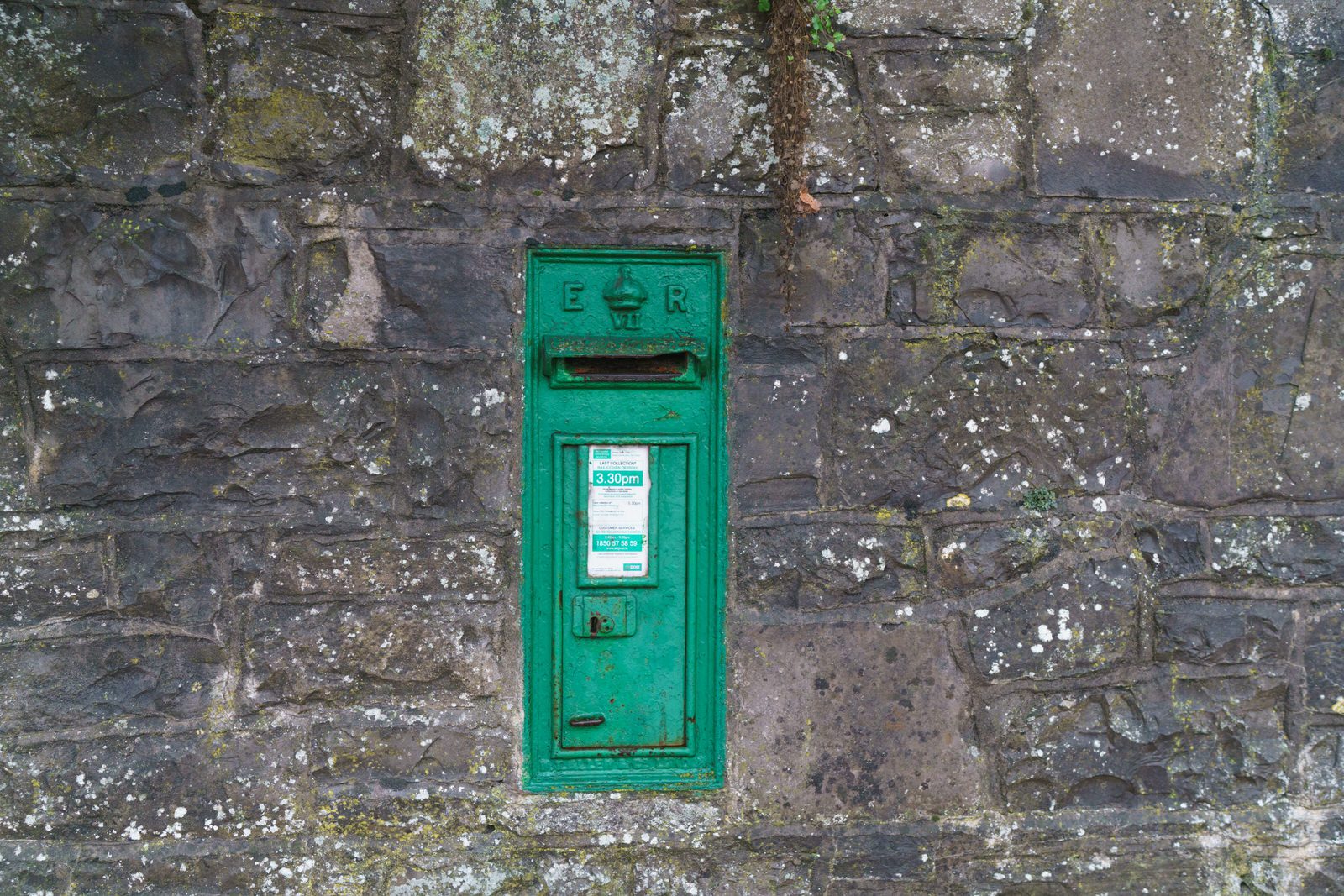
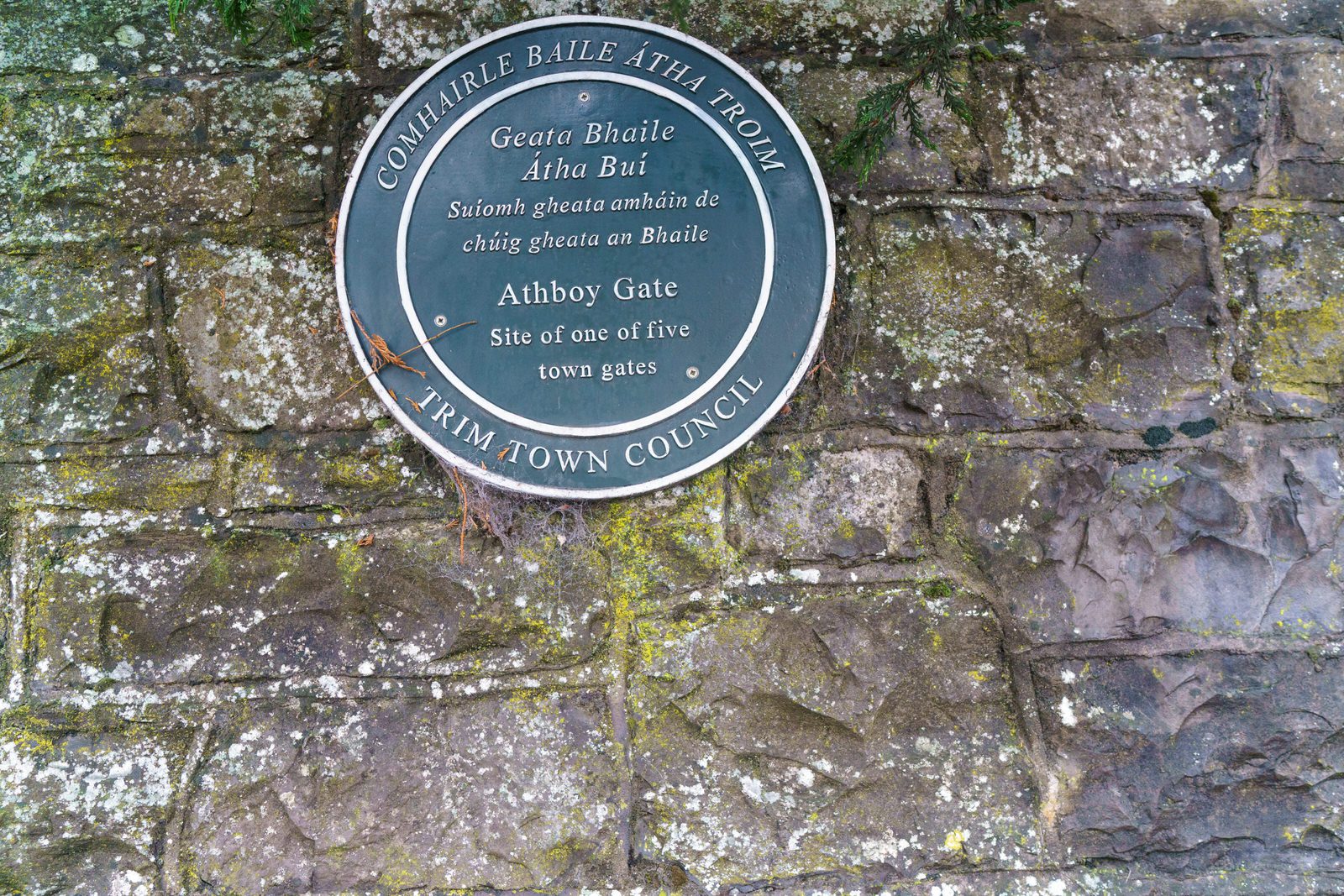
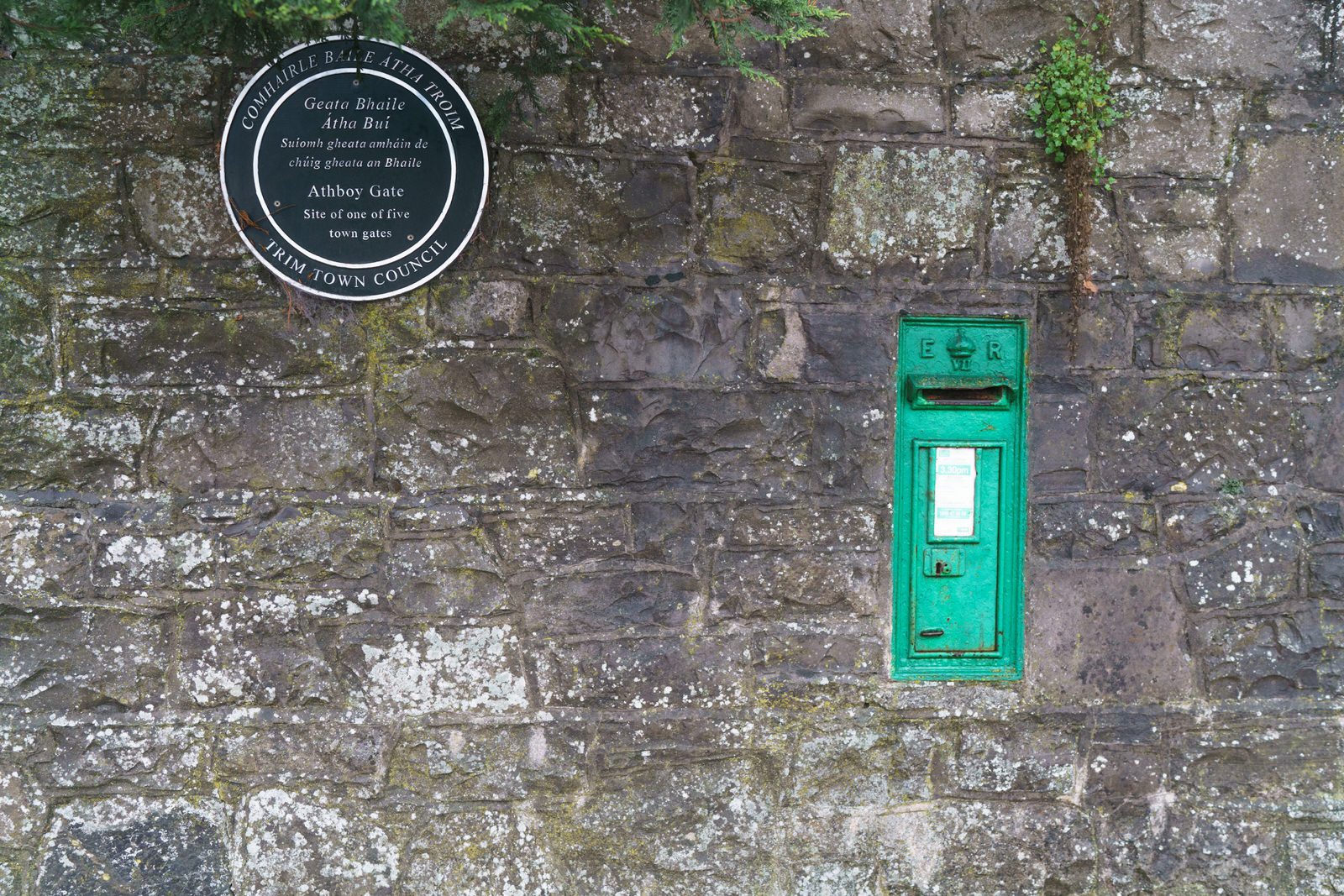
by infomatique
THE CATHEDRAL OF ST PETER AND PAUL IN NEWTOWN TRIM
Newtown Abbey is a medieval monastery and National Monument located in Trim, County Meath and it is a much visited location at Christmas. I visited the location on Christmas Day as well as today the 26th December.
It is Saint Stephen’s Day here in Ireland but it is known as Boxing Day in the United Kingdom. I mentioned this as a number of people asked me how do we celebrated Boxing Day here in Ireland.
Saint Stephen’s Day, also called the Feast of Saint Stephen, is a Christian saint’s day to commemorate Saint Stephen, the first Christian martyr or protomartyr, celebrated on 26 December in Western Christianity and 27 December in Eastern Christianity. The Eastern Orthodox churches that adhere to the Julian calendar mark Saint Stephen’s Day on 27 December according to that calendar, which places it on 9 January of the Gregorian calendar used in secular contexts. In Latin Christian denominations, Saint Stephen’s Day marks the second day of Christmastide.
It is an official public holiday in Alsace-Moselle, Austria, the Balearic Islands, Bosnia and Herzegovina, Catalonia, Croatia, the Czech Republic, Denmark, Estonia, Finland, Germany, Greece, Hungary, Ireland, Italy, Luxembourg, Montenegro, North Macedonia, Norway, Poland, Romania, Serbia, Slovakia, Slovenia, Sweden, Ukraine, Switzerland and Newfoundland. The date is also a public holiday in those countries that celebrate Boxing Day on the day in addition to or instead of Saint Stephen’s Day, such as Australia, Canada, New Zealand, South Africa and the United Kingdom.
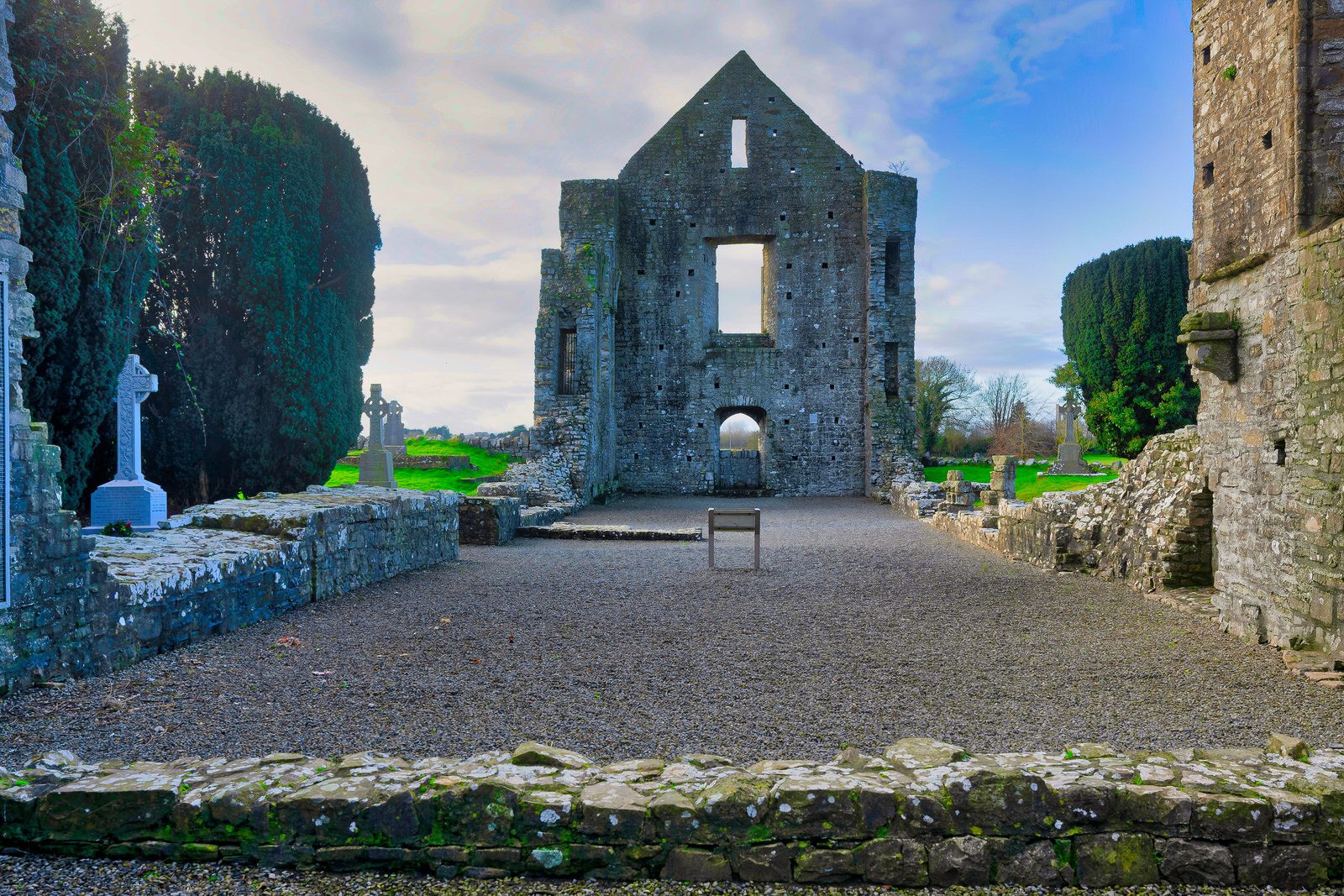
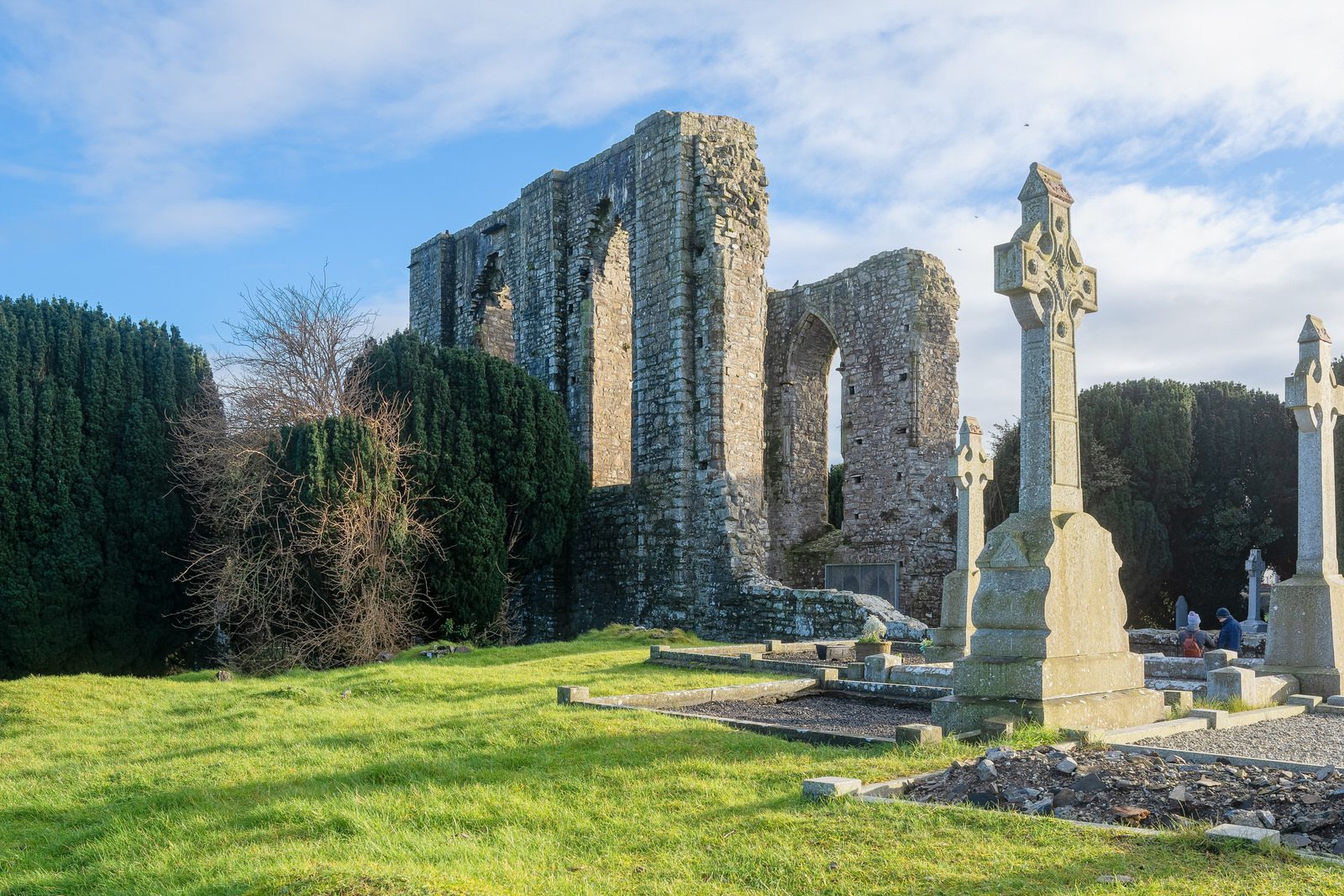

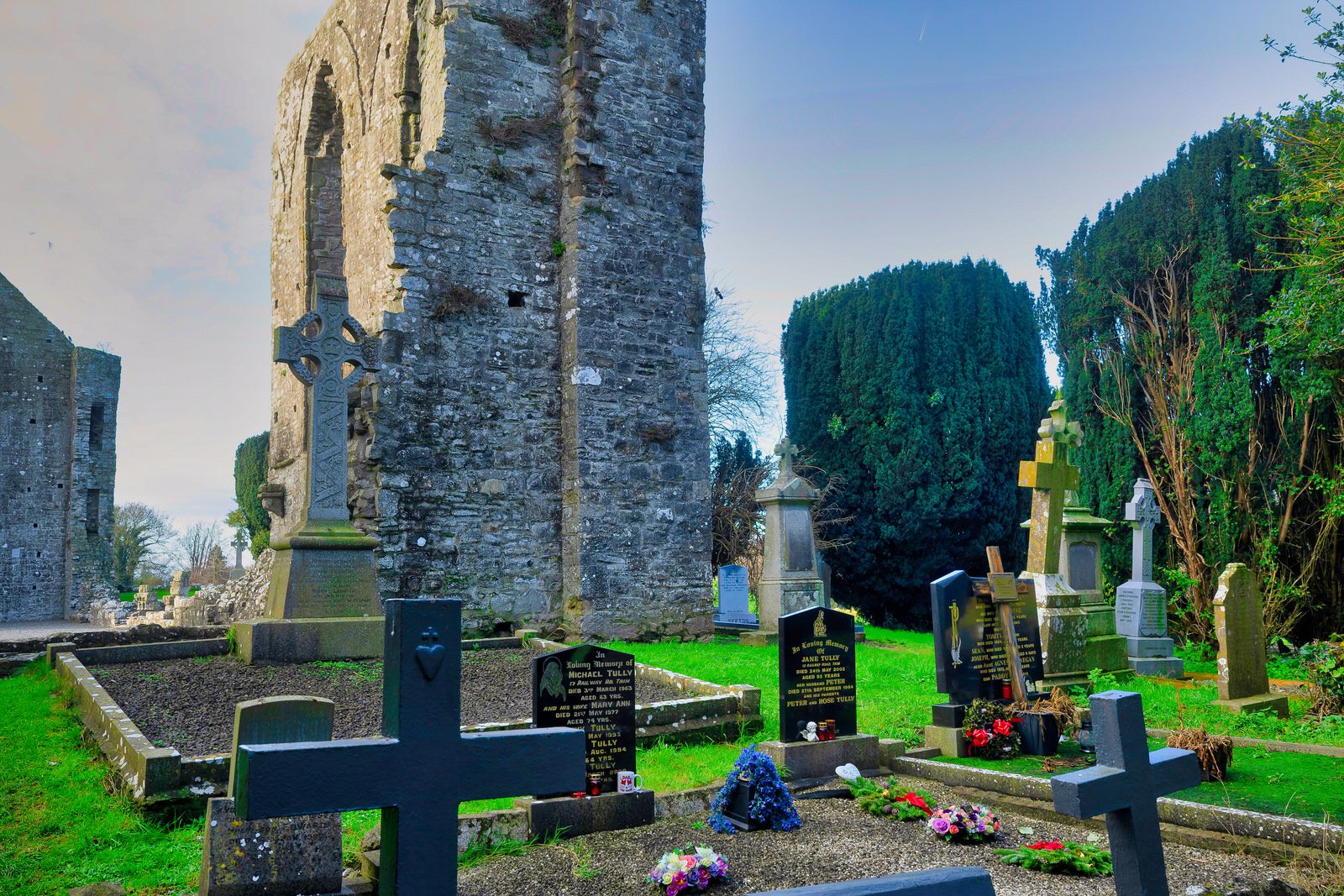

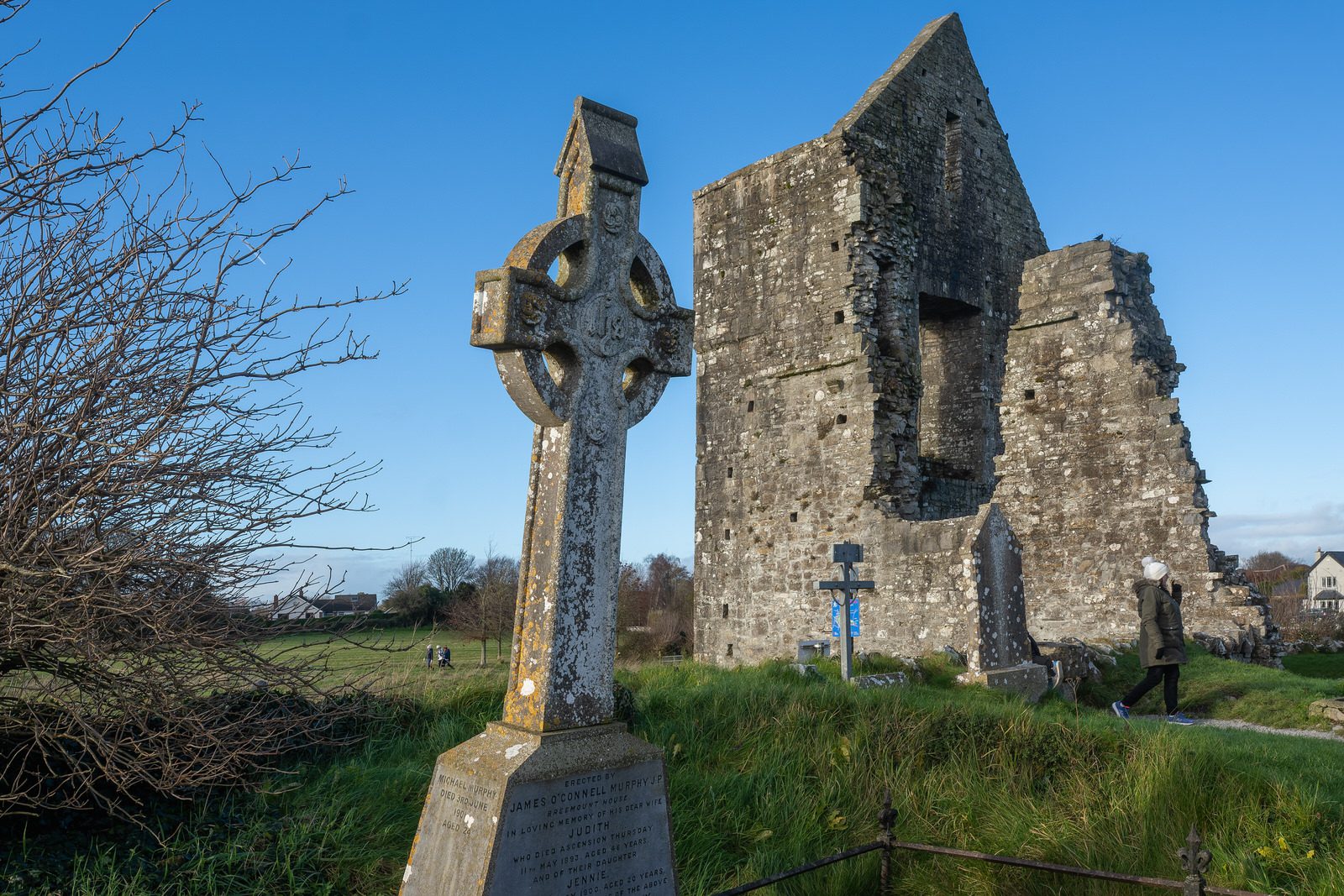
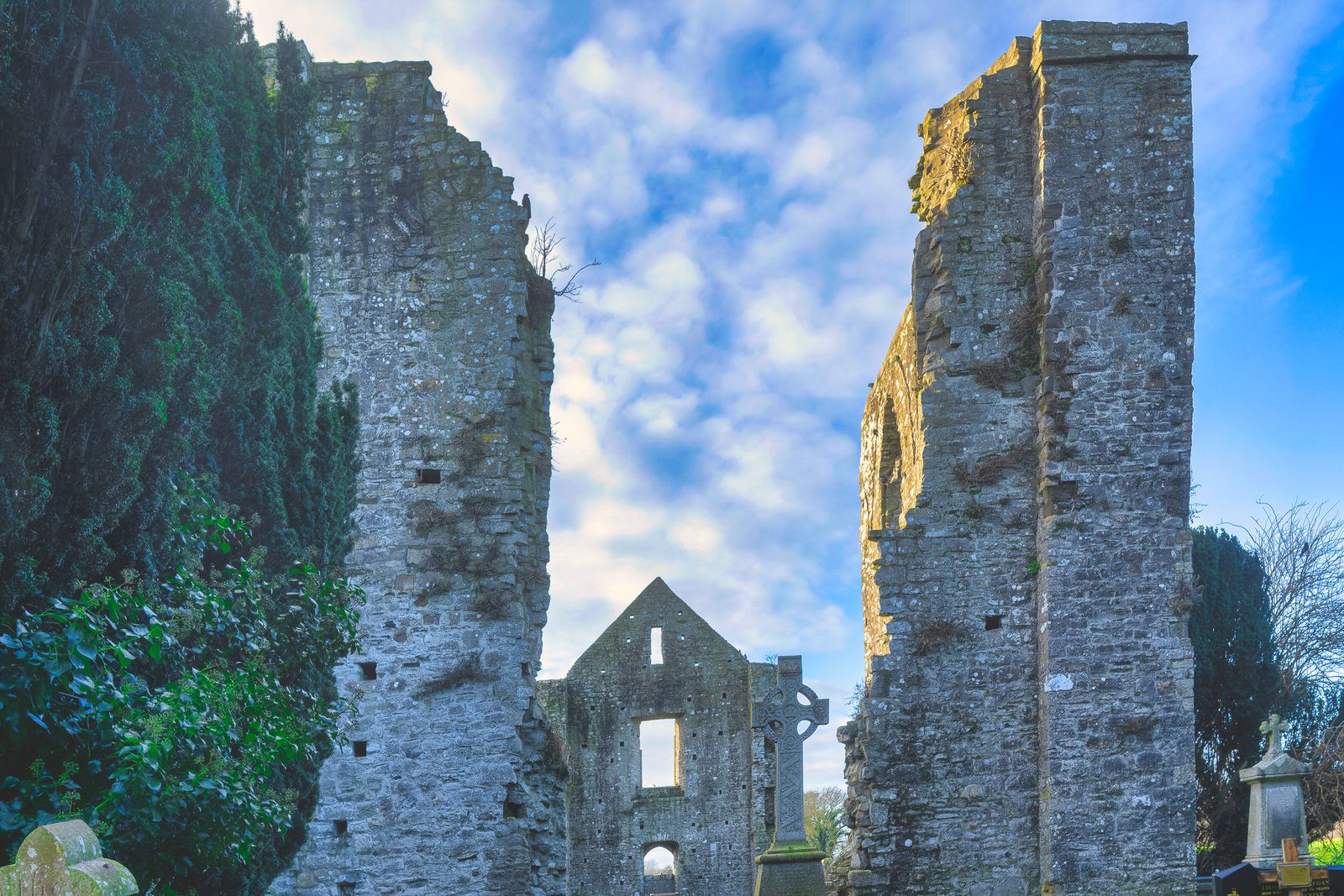
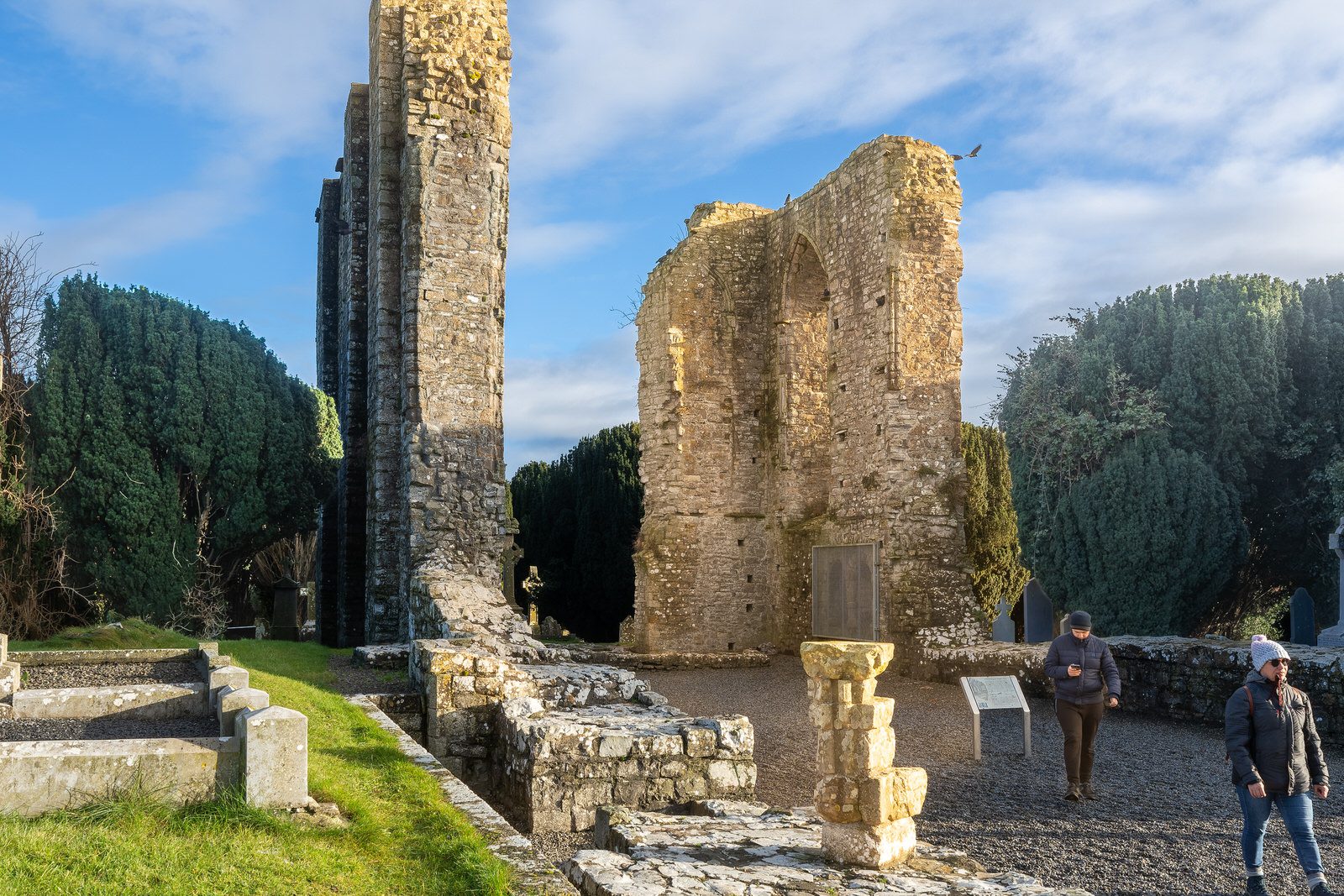
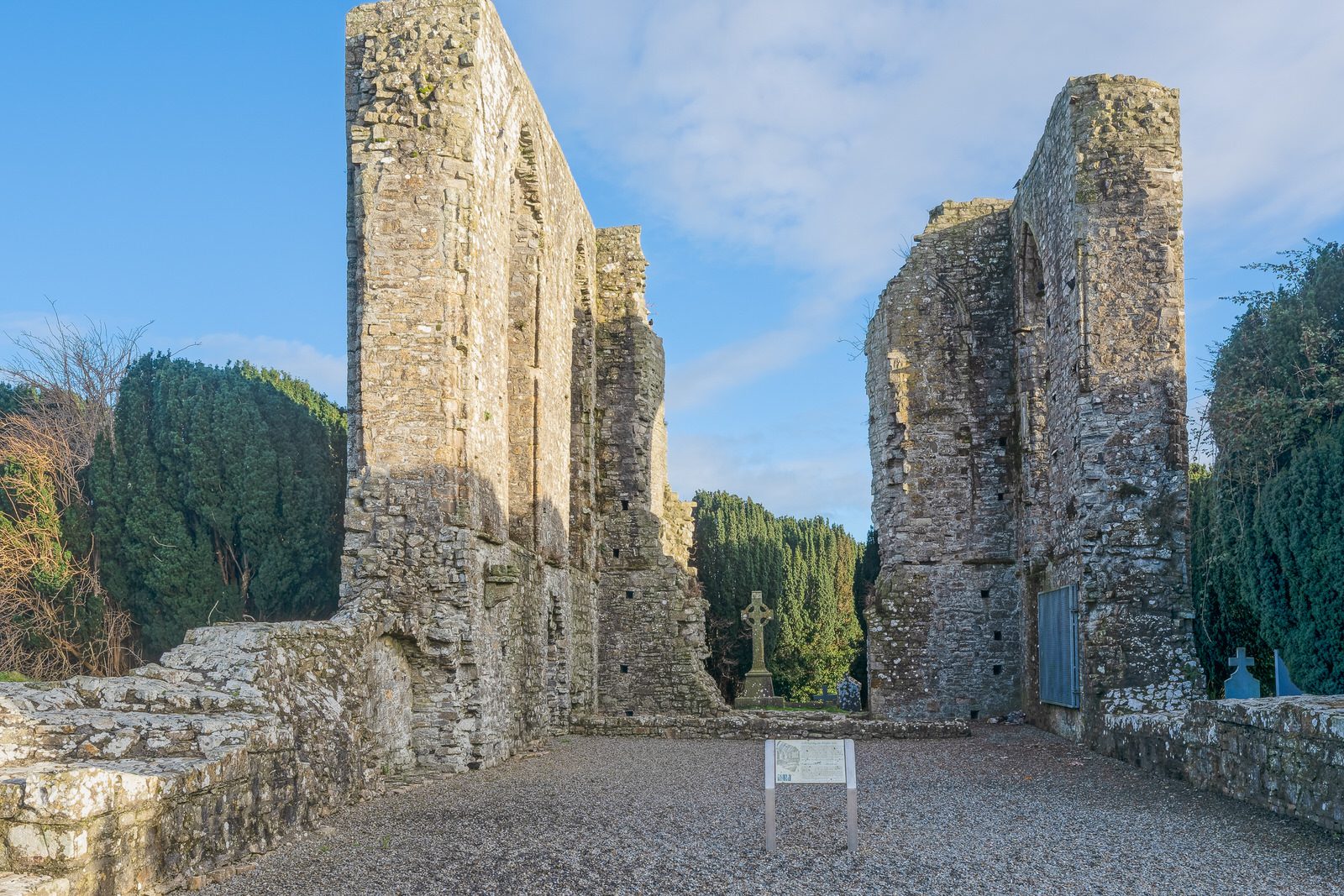
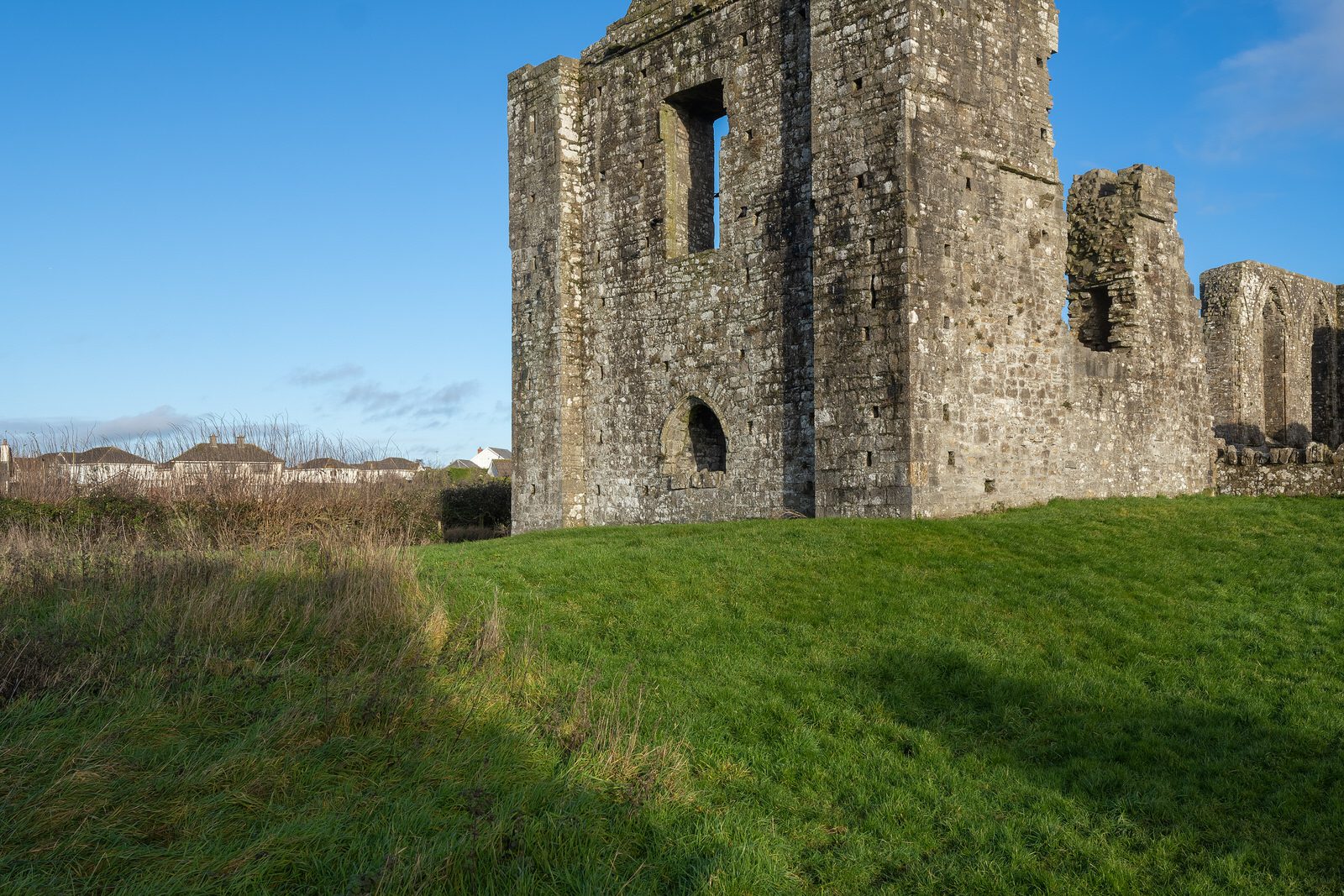
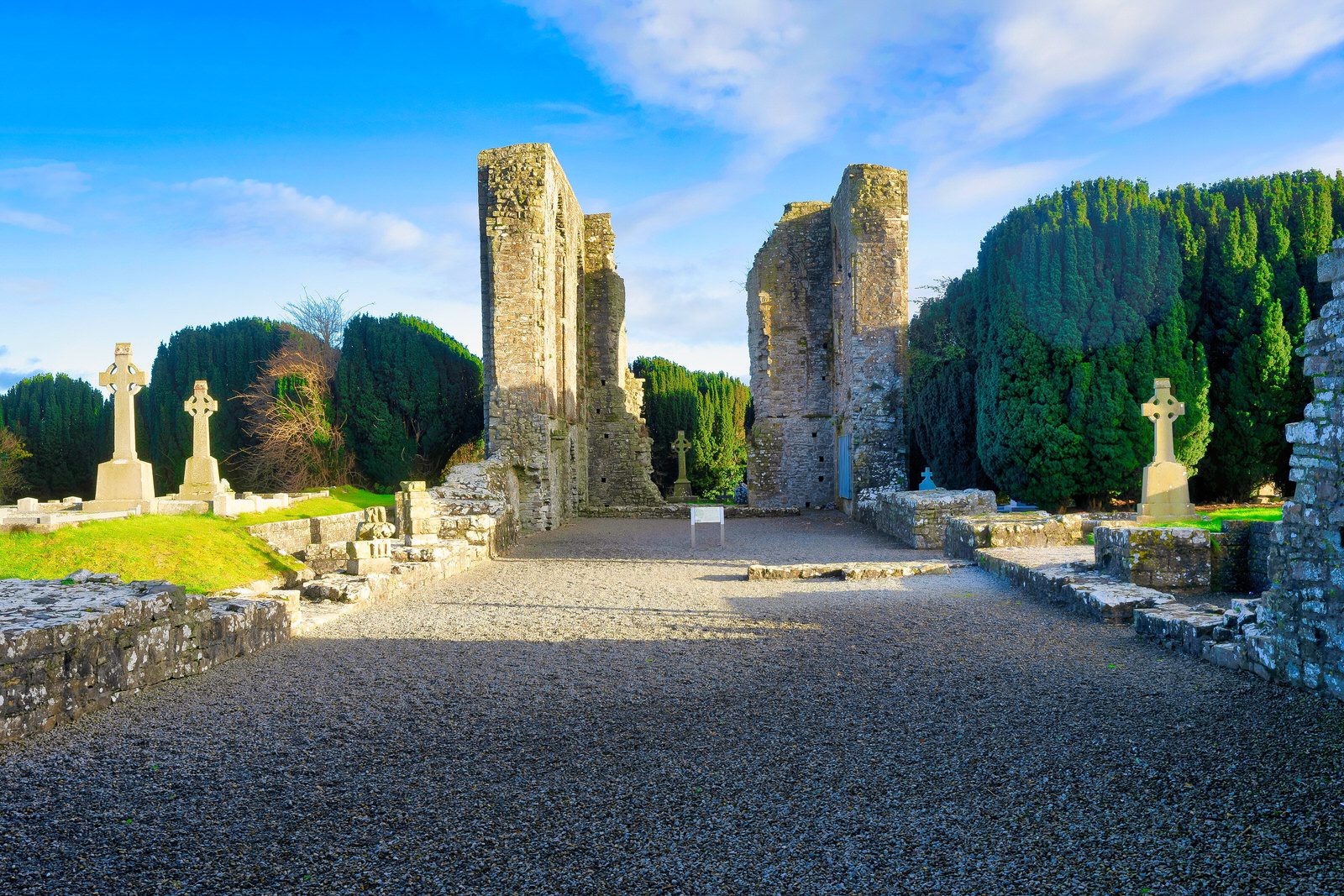
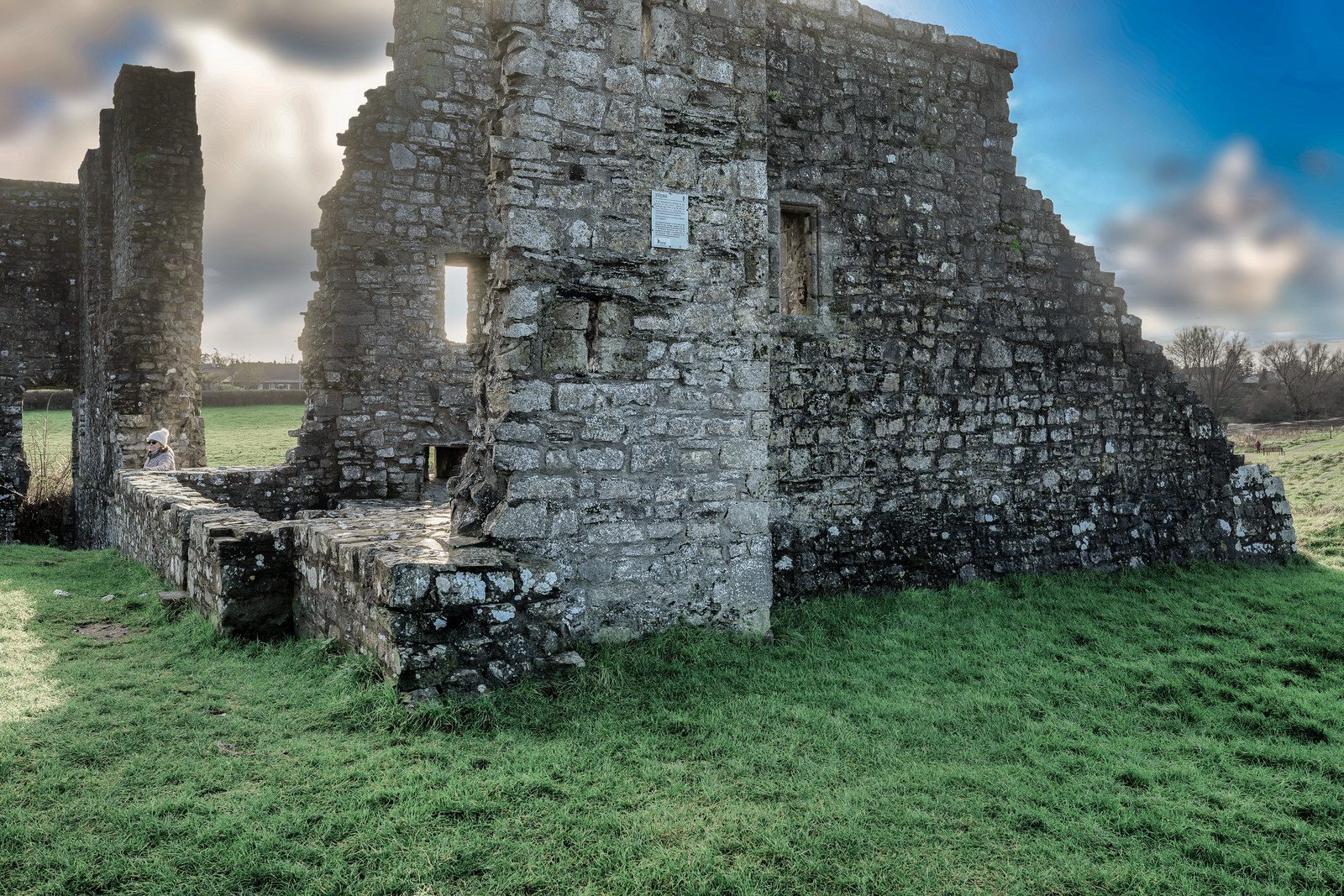

by infomatique
I USED AN iPHONE 12 PRO MAX
The Porch Fields are a green area in Trim, located on the north bank of the River Boyne, between the old town wall and Sheep Gate to the west and Newtown Abbey to the east.
You really should take the Trim Porch Fields and River Walk along the banks of the historic River Boyne and enjoy the views of the rich medieval heritage that is so abundant in and around Trim in County Meath. From the imposing structure of Trim Castle to the serene setting of St Peter and Paul’s Cathedral at Newtown, you can try to get a sense of what the immediate area may have looked like in the medieval period.
Interpretive Panels are located along the River Walk and there are opportunities to take a seat and relax along the route.
The Porch Fields is an area of medieval farmland outside Trim, Ireland with a medieval roadway that forms a National Monument.
The Porchfield lies between the Anglo‐Norman town of Trim founded c. 1180 and the rural borough of Newtown Trim founded c. 1220. The two towns were connected through the open field via a medieval sunken lane road about 1 km (⅔ mile) in length. The new burgesses were awarded 3 acres (1.2 ha) of land each. They used ridge and furrow agriculture to grow crops, and each narrow strip was one perch (5 m / 16½ feet) wide — this may is how the Porch Fields acquired their name. However, it could also derive from the French porte meaning “door”, referring to the Sheep Gate. The name ” Portual Field” appears on a nineteenth-century map.
It is claimed that Oliver Cromwell’s troops made camp on the Porch Fields before the 1649 Siege of Drogheda.


